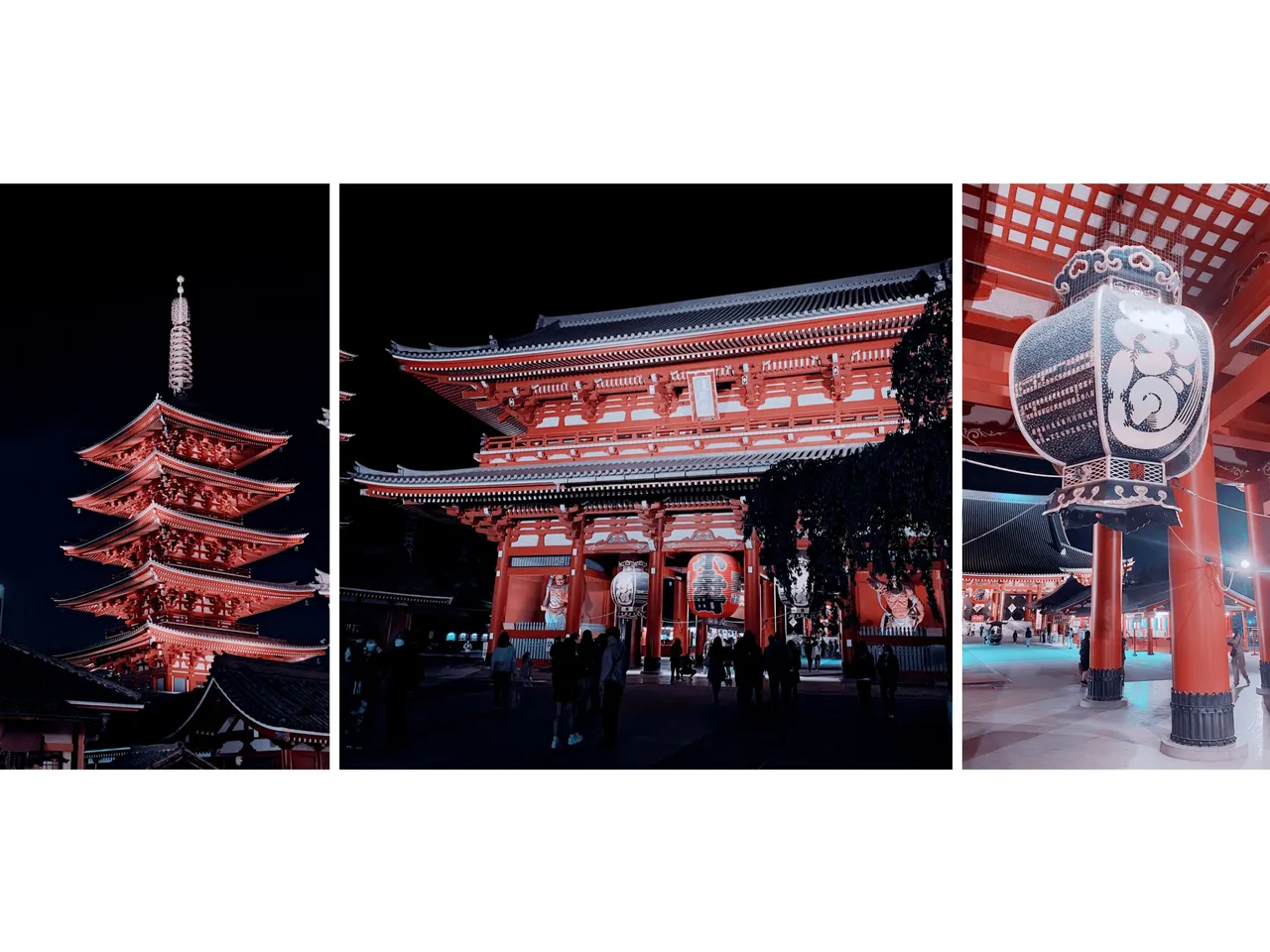
If you're in Tokyo, you shouldn't miss the district of Asakusa. It's located in Taito-ku, in the northern region of Tokyo. Asakusa is quite famous, it's the cultural center of Tokyo and has a wide shopping district. Not only that, there's a large Buddhist temple that's flocked with tourists all year long.
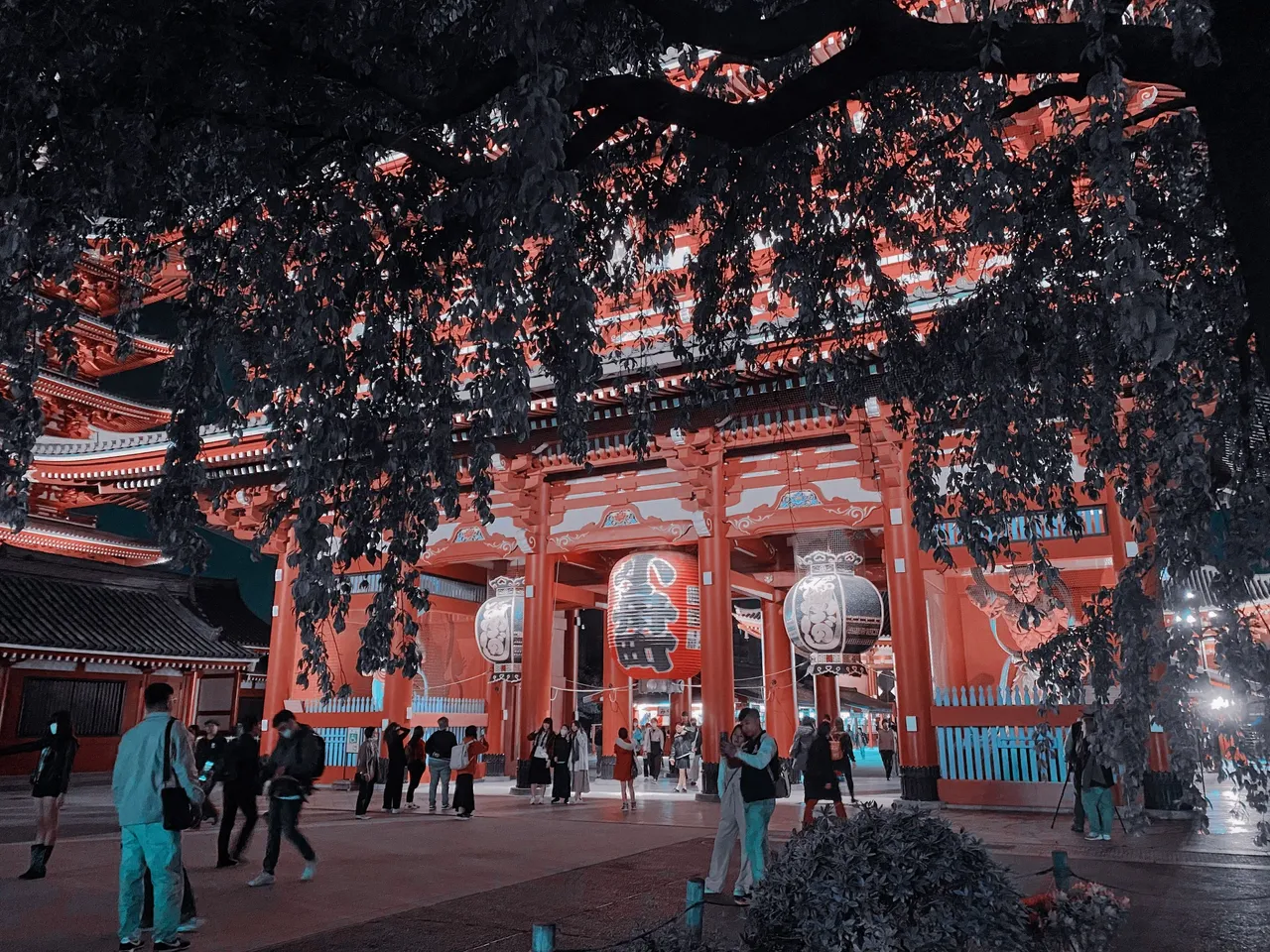
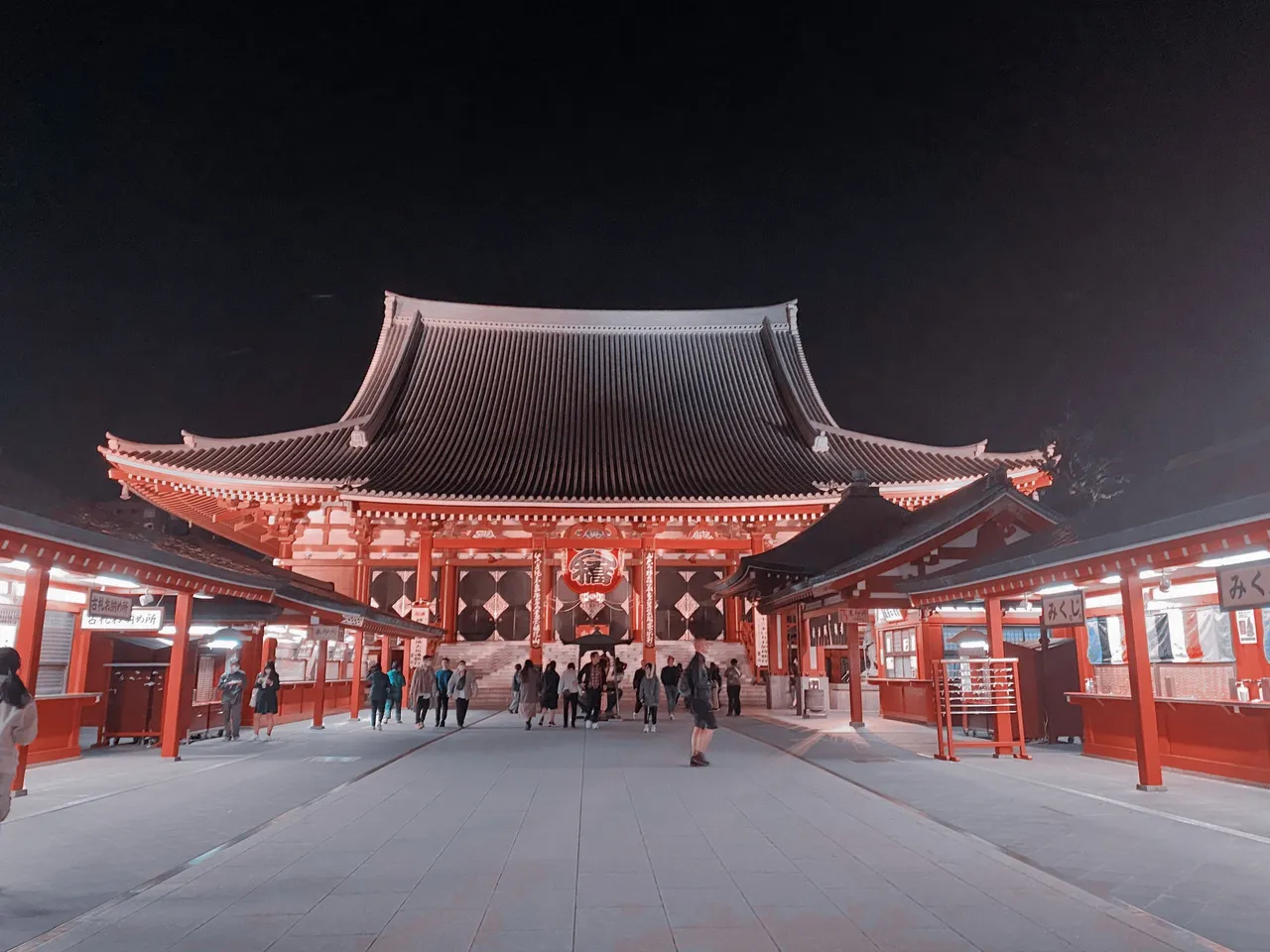
The famous large Buddhist Temple in Asakusa is called Sensoji Temple (浅草寺). It also goes by the name Kinryu-zan Senso-ji (金龍山浅草寺) and Asakusa Kannon (浅草観音). Can you believe it's Tokyo's oldest temple?
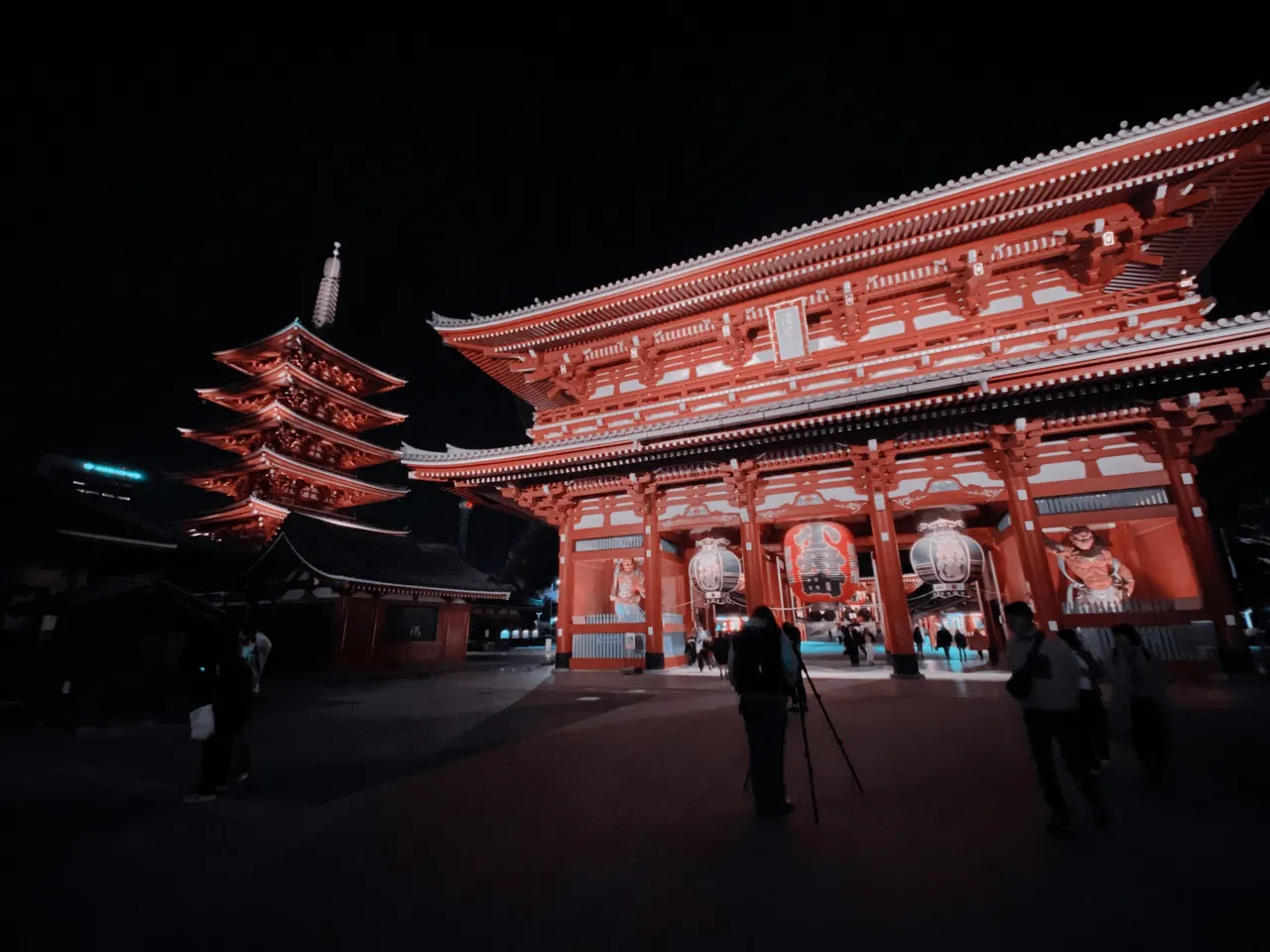
The legend says that in the year 628, two brothers fished a statue of Kannon, the goddess of mercy, out of the Sumida River, and even though they put the statue back into the river, it always returned to them. Consequently, Sensoji was built nearby for the goddess of Kannon. The temple was completed in 645, making it Tokyo's oldest temple.
source: Japan Guide - Sensoji
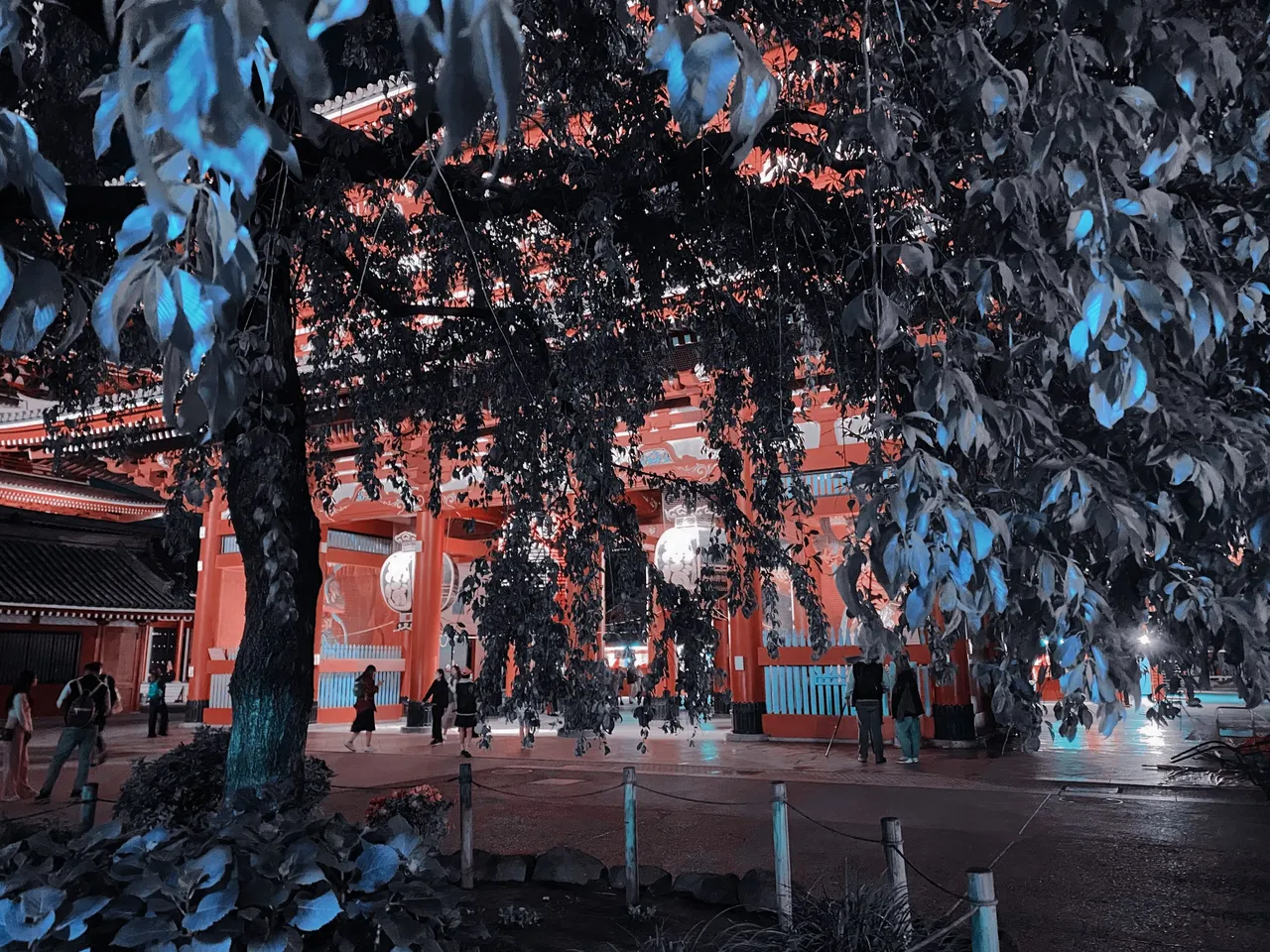
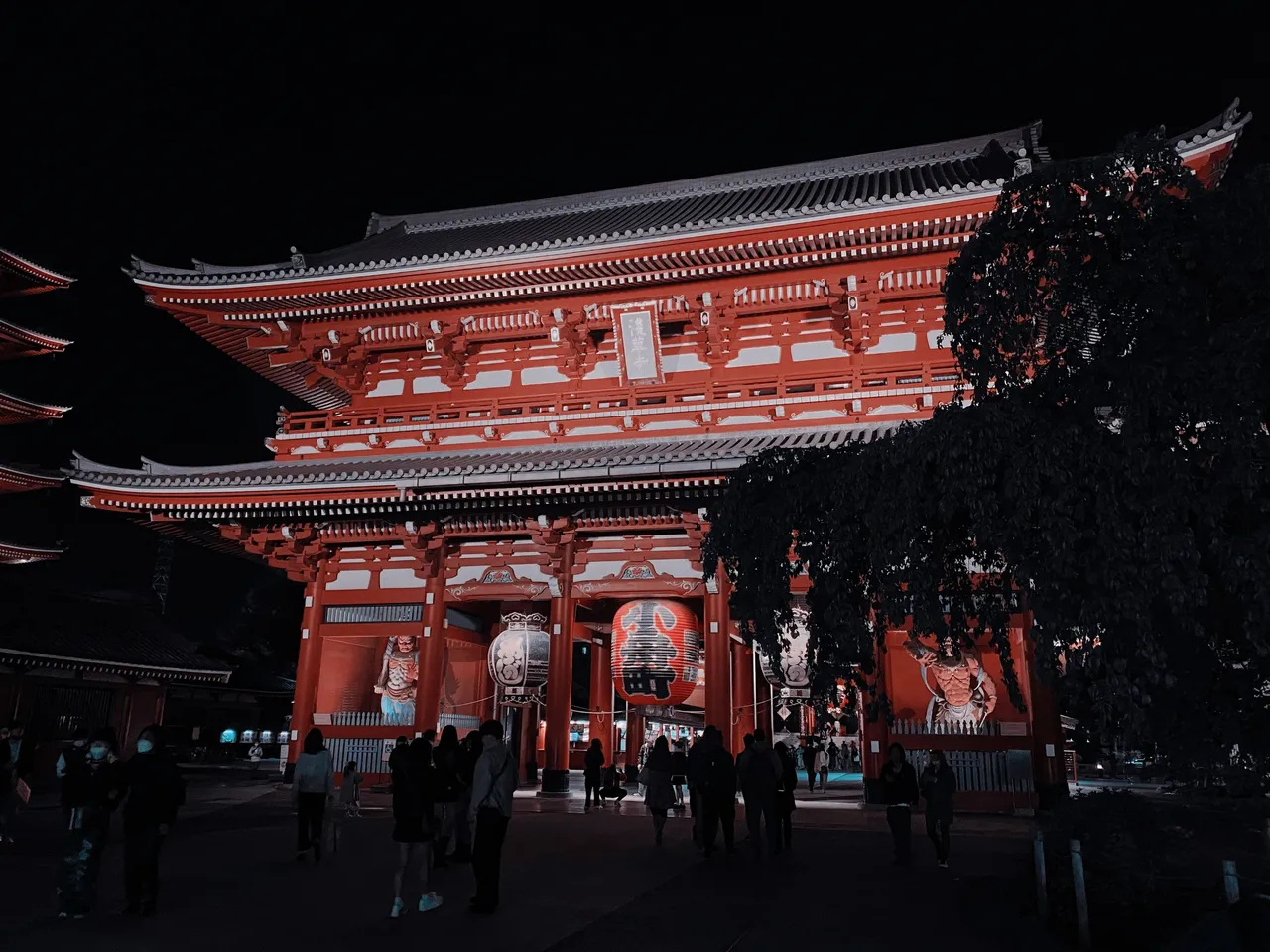
Outside Sensoji, there's a shopping district which I would be talking in another post. From Sensoji, you could also catch a glimpse of the famous Tokyo Skytree, which is located just across the river.
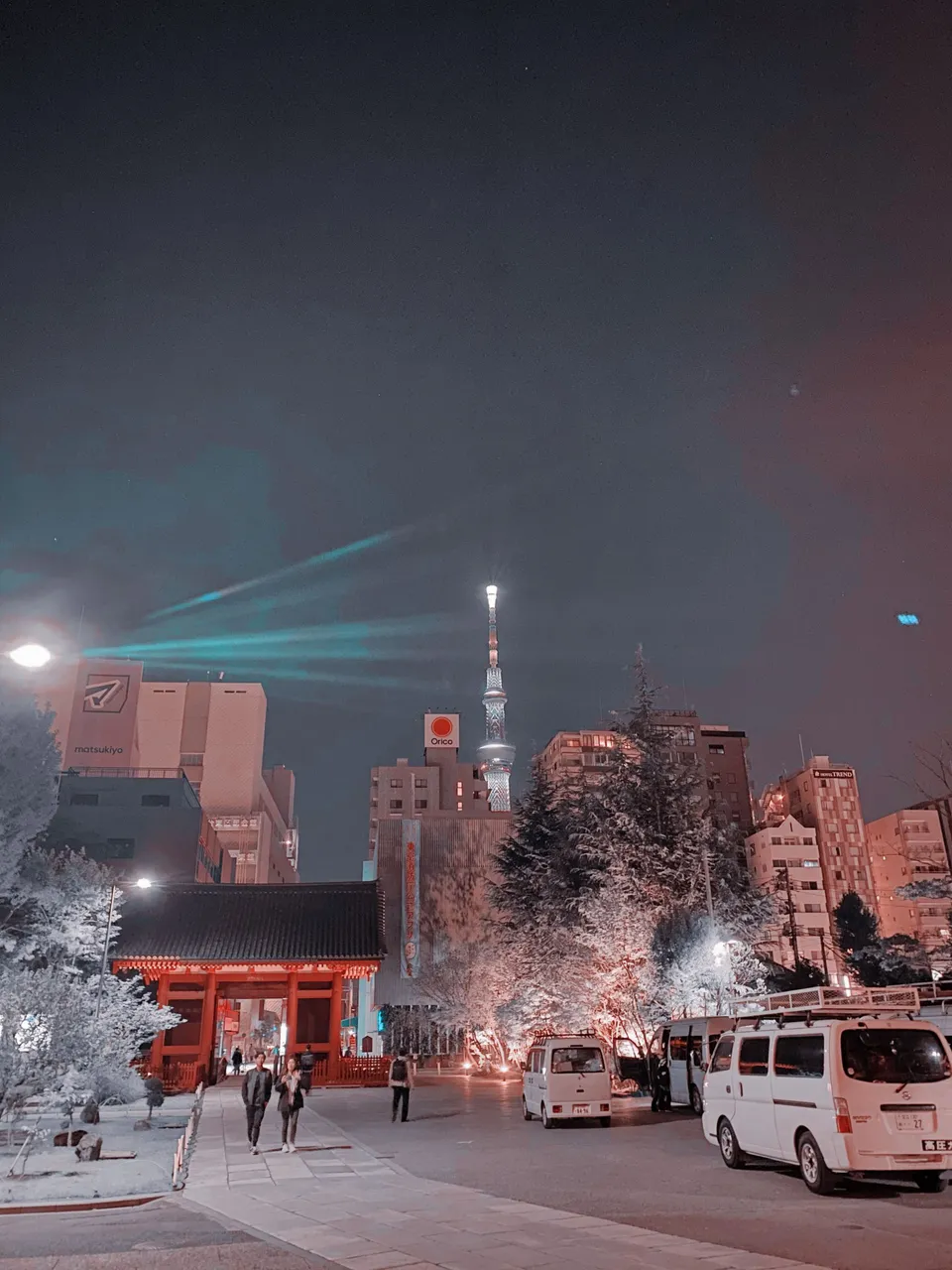
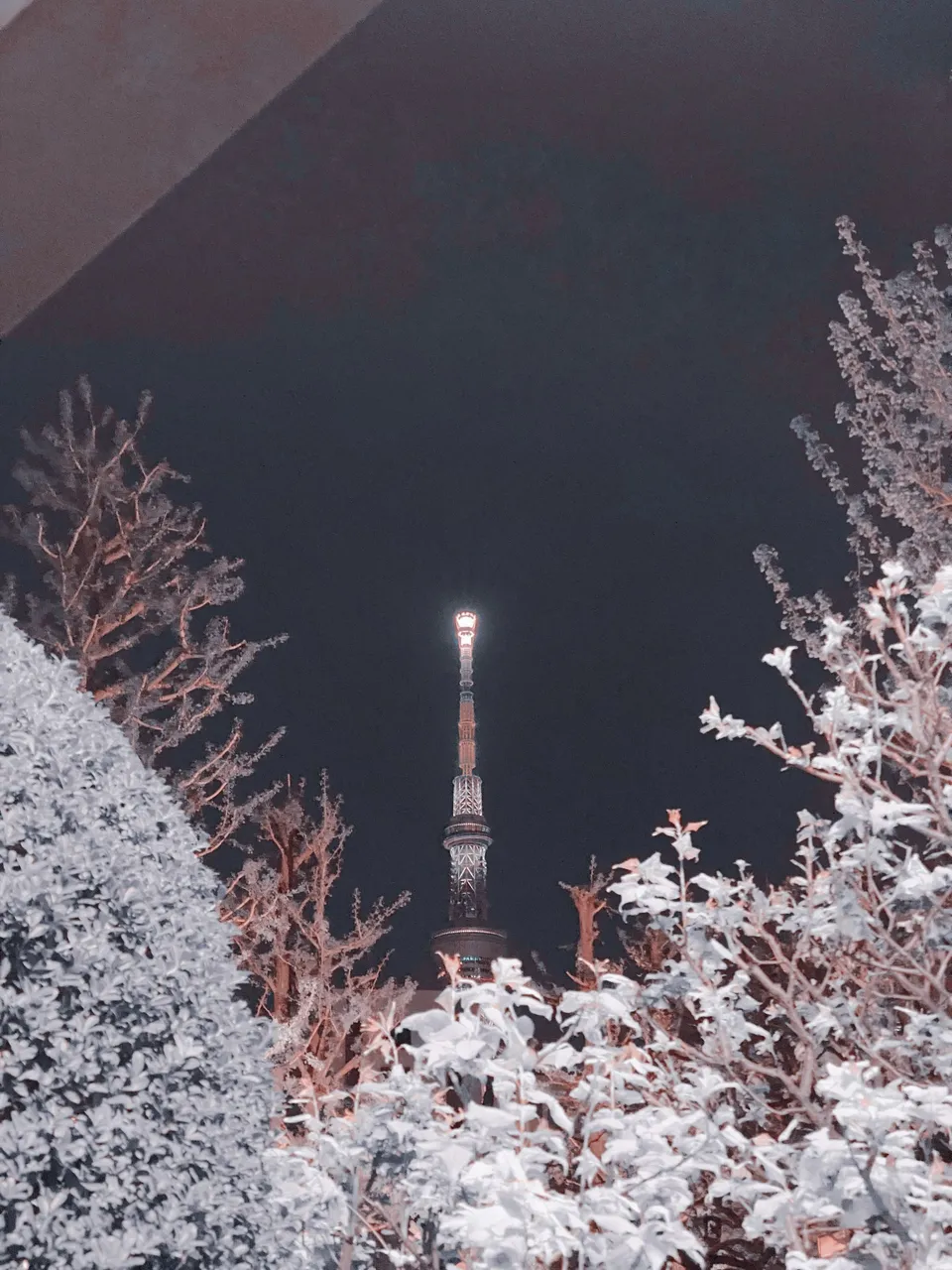
There are also lanterns outside, which I think changes. You would clearly know when you are near the inner temple grounds because of these lanterns.
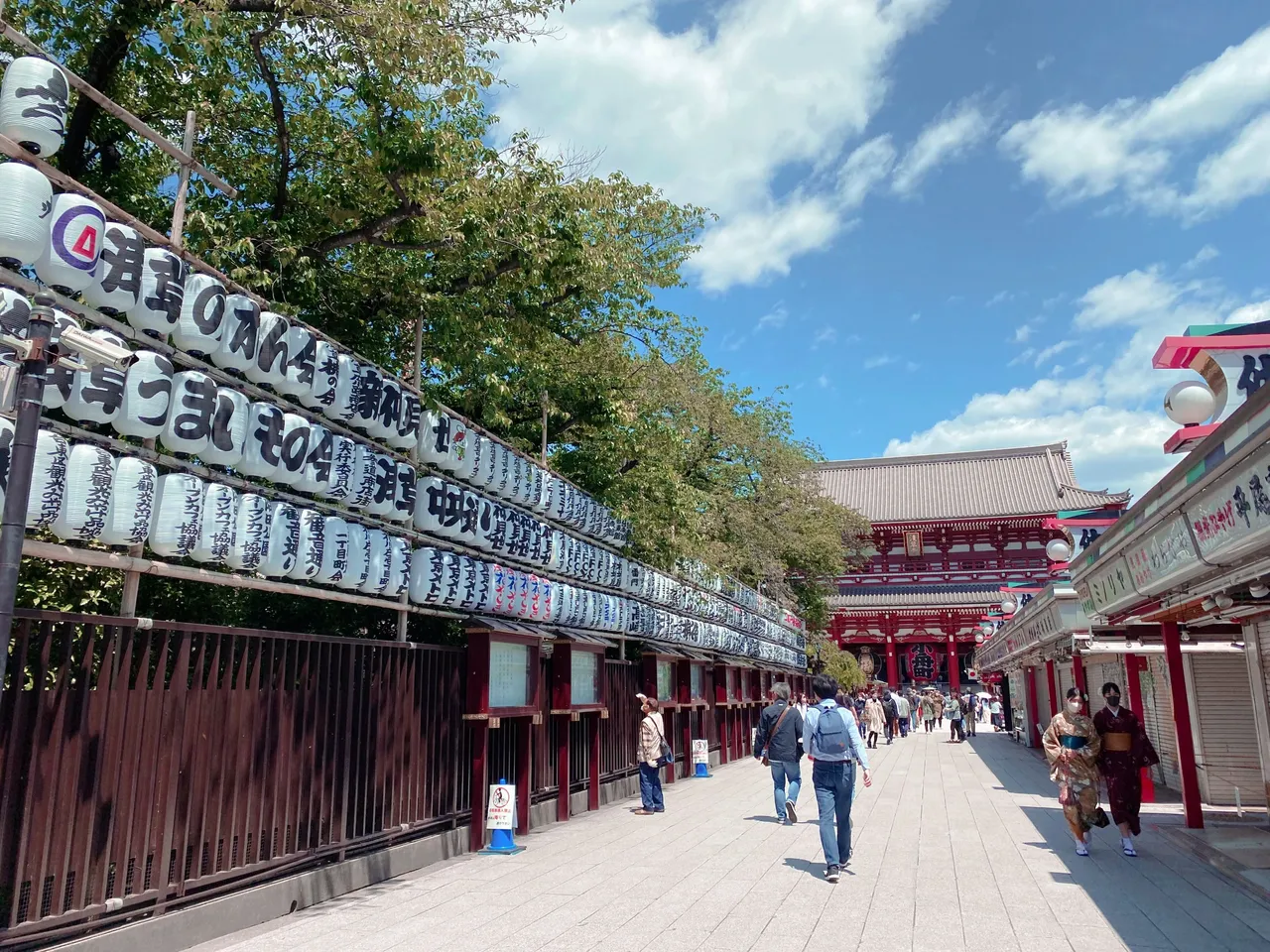
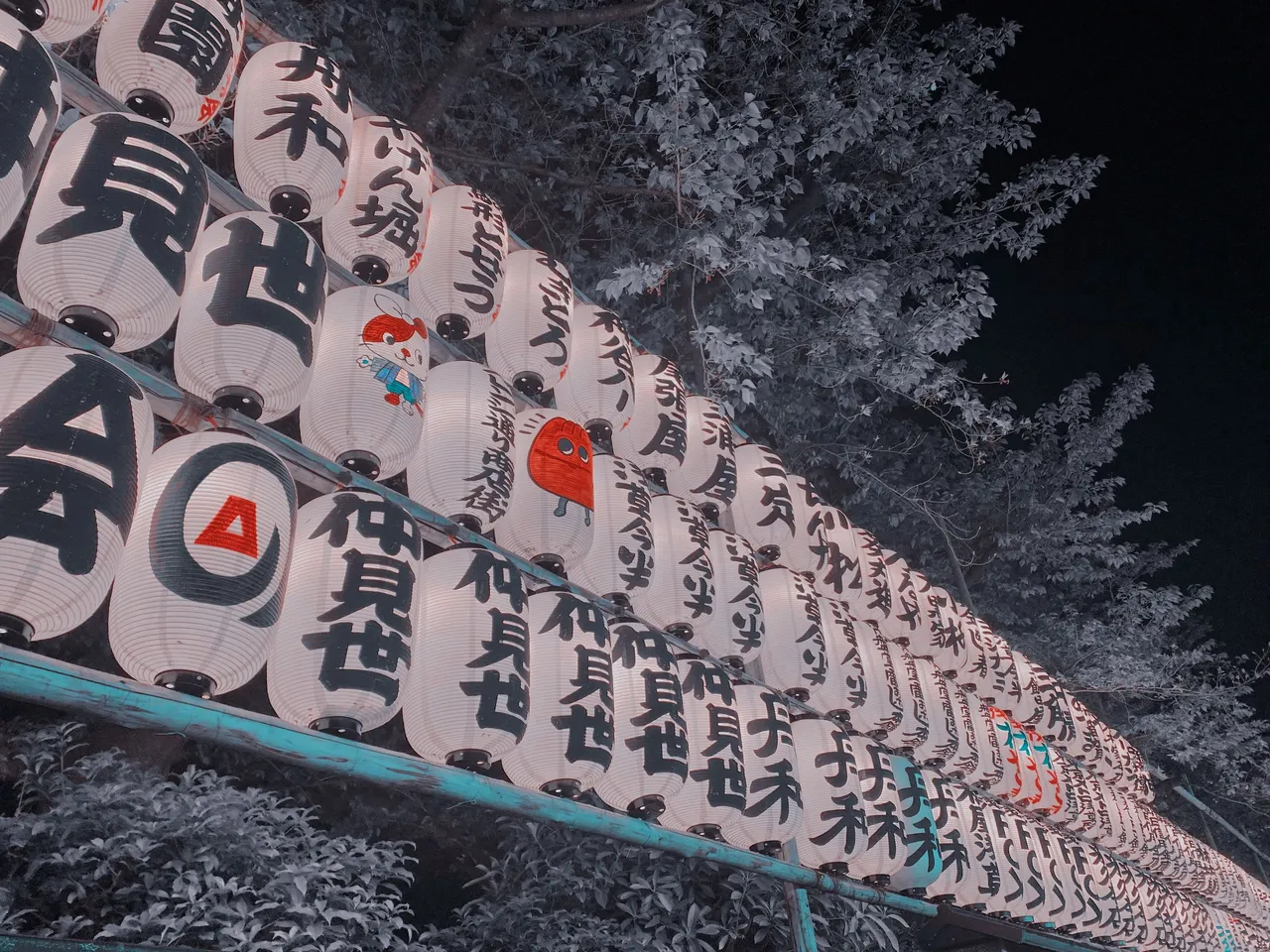
Even when this place is full of tourists, I've only been here 2 times. One time I went with my friends - it was a cloudy day of Golden Week of 2021. I was still new in Tokyo and we didn't have plans for the entire holiday week so my friends from Osaka came to Tokyo and so came up with this plan. Later on, those friends moved to Tokyo. 😁
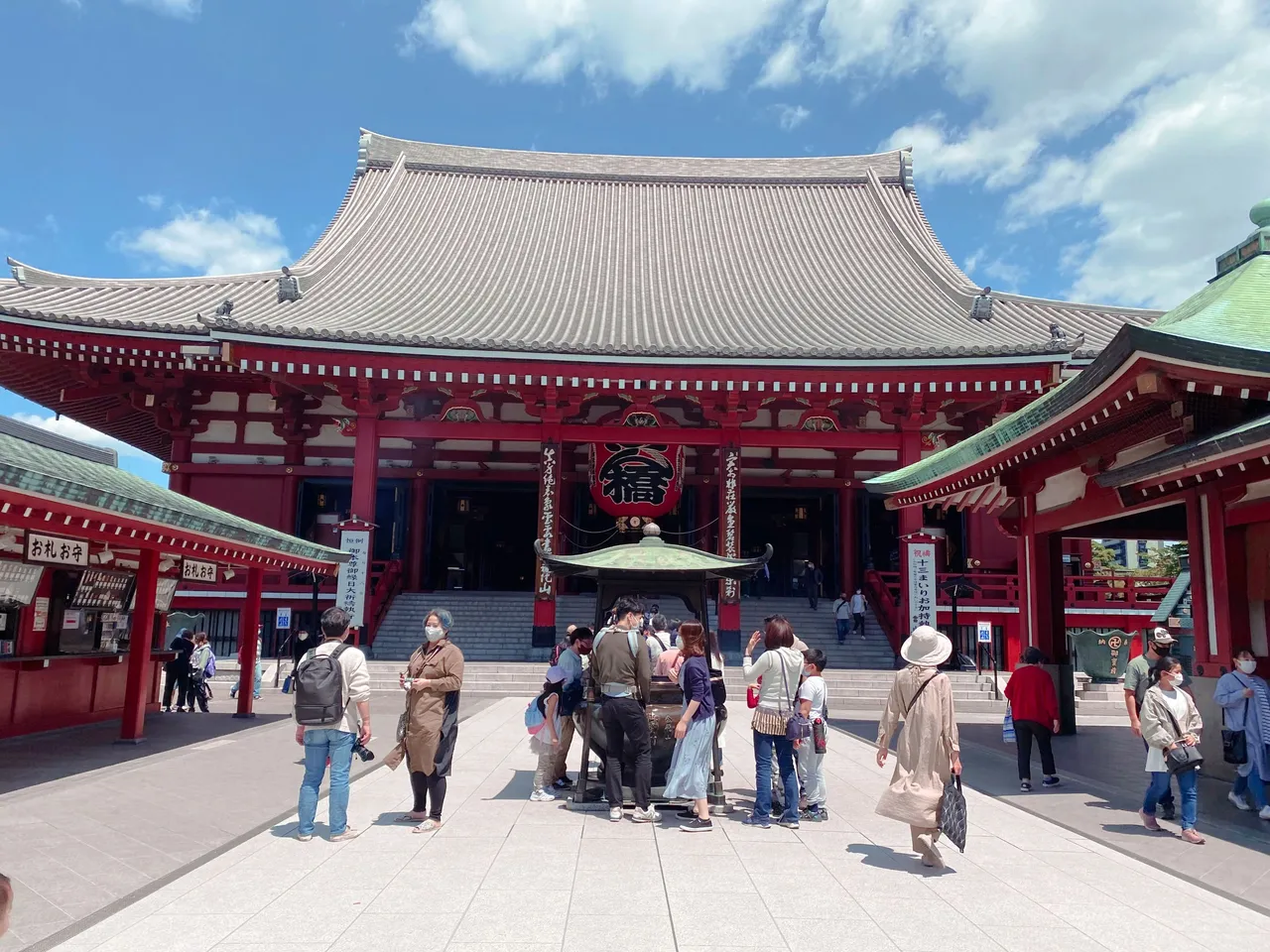
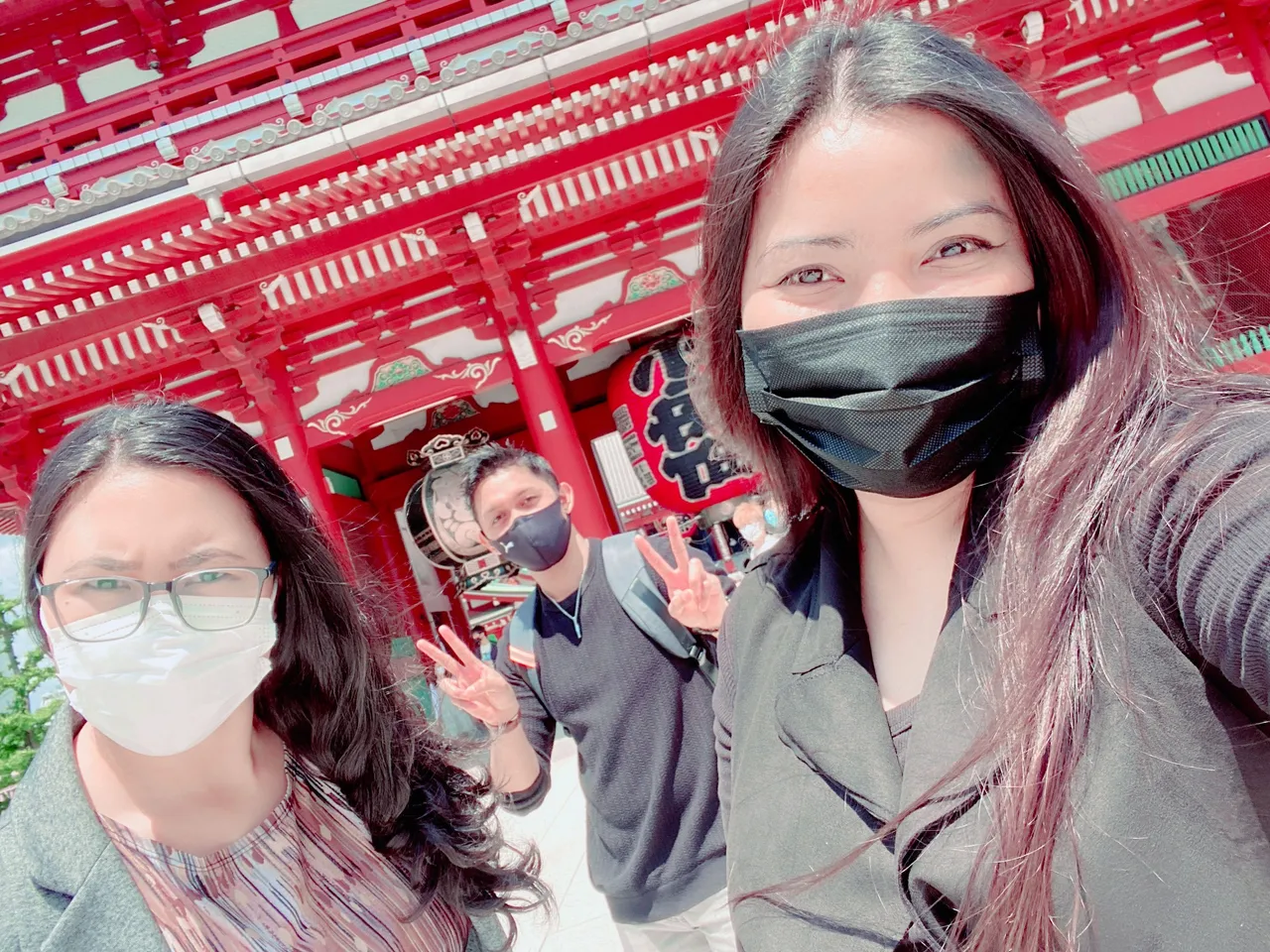
The recent visit I did to this famous temple was last month, when I was looking for souvenirs. I didn't really have plans to visit the temple but since I was in the area, might as well check it out during the night. I never would've imagined I would be mesmerized by this temple at night time than in day time. Coming here at night and alone made me reflect some things in my life - even just for a little while.
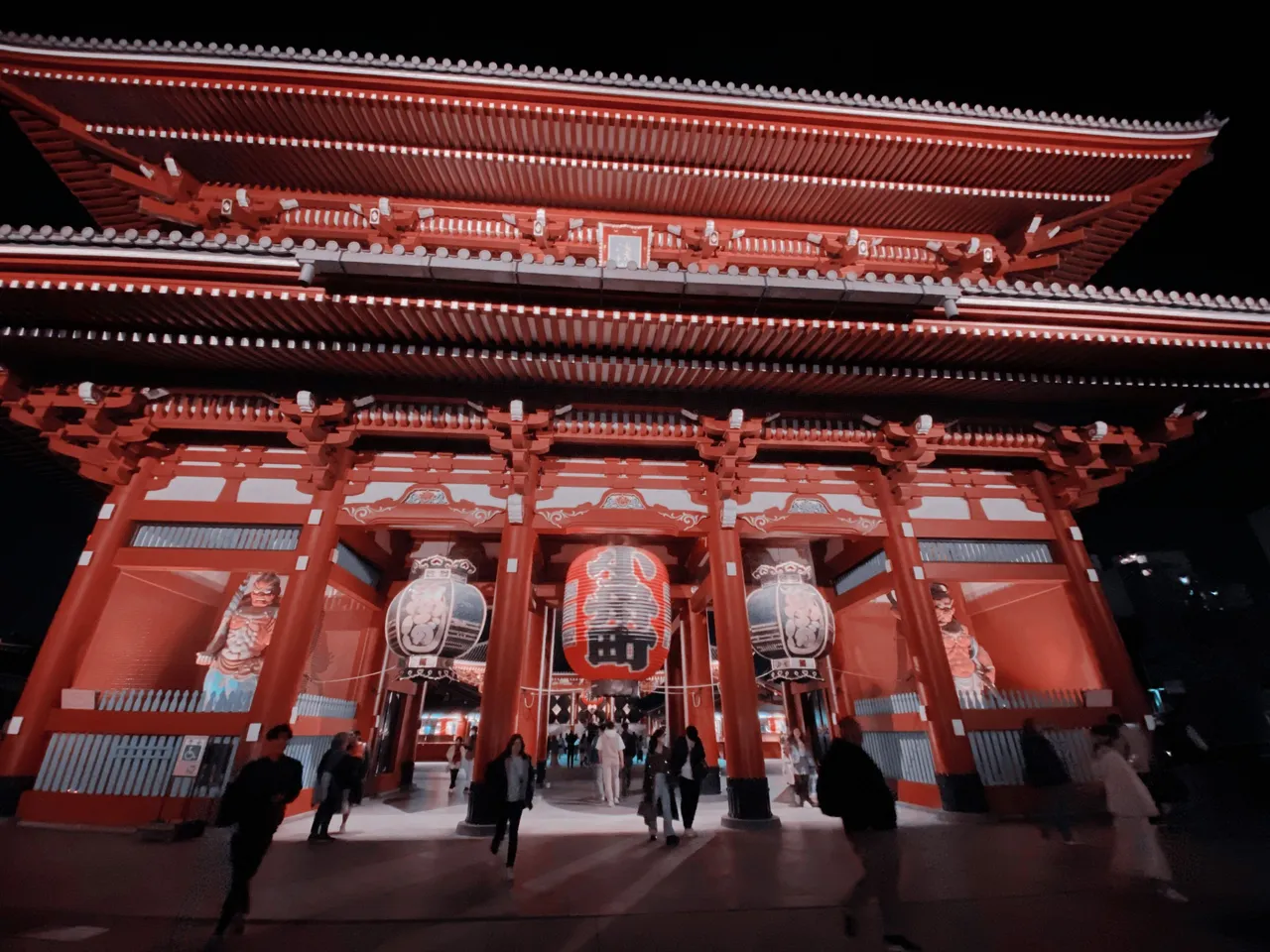
There are 2 gates to reach the heart of Sensoji. The Hozomon (宝蔵門 which means Treasure House Gate) is the closest to the main hall while the Kaminarimon (雷門 which means Thunder Gate) is located further. I couldn't really pick which gate is my favorite because they're both great in their own ways.
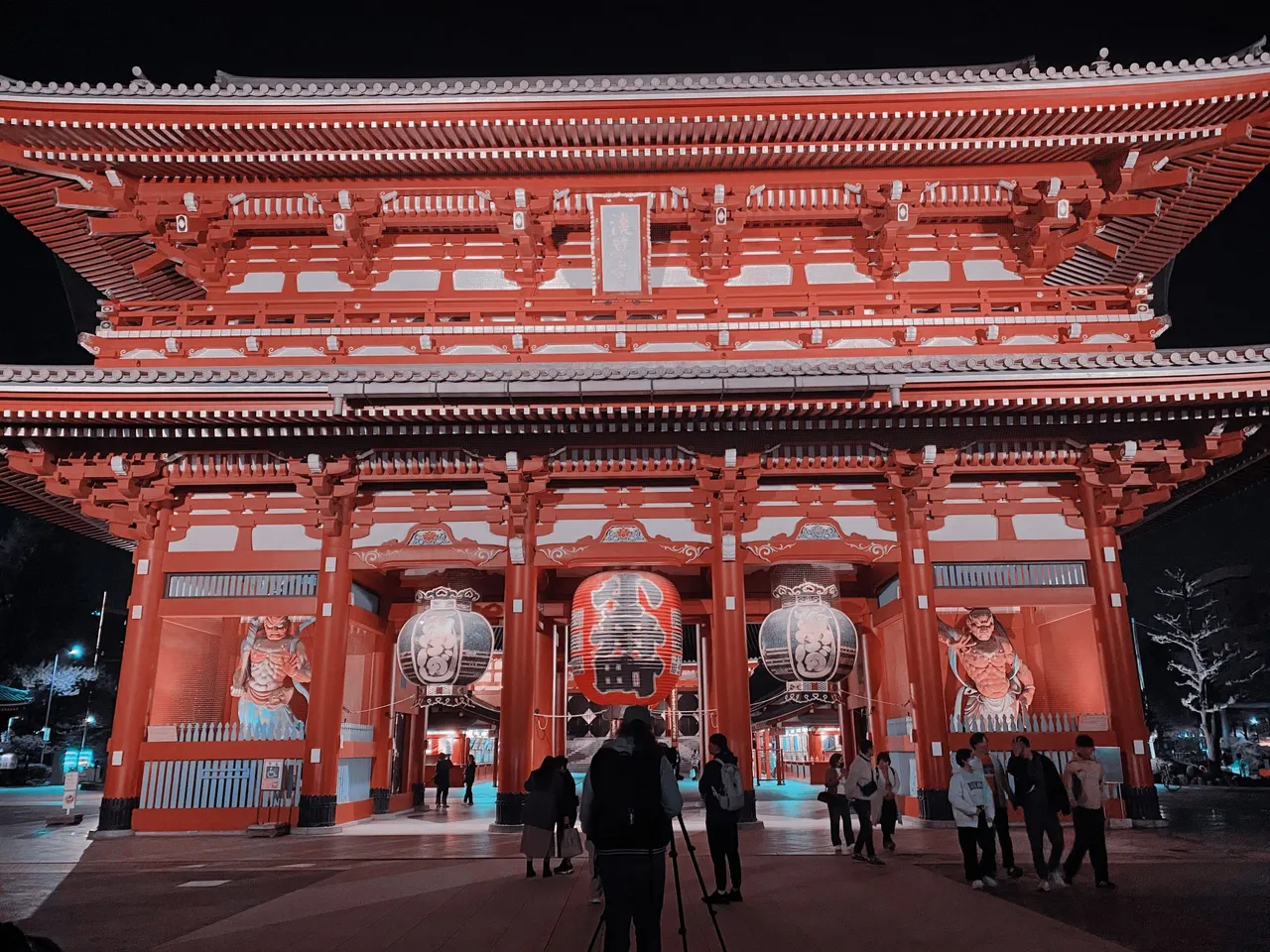
When exiting from the subway, you wouldn't really notice that you have not passed the Kaminarimon. Kaminarimon is the outer gate, and after passing it, you will be lead to the shopping district. The lantern on the outer gate is the kanji of Kaminarimon, and the statues located in it are the Shinto and Buddhist gods and goddesses.
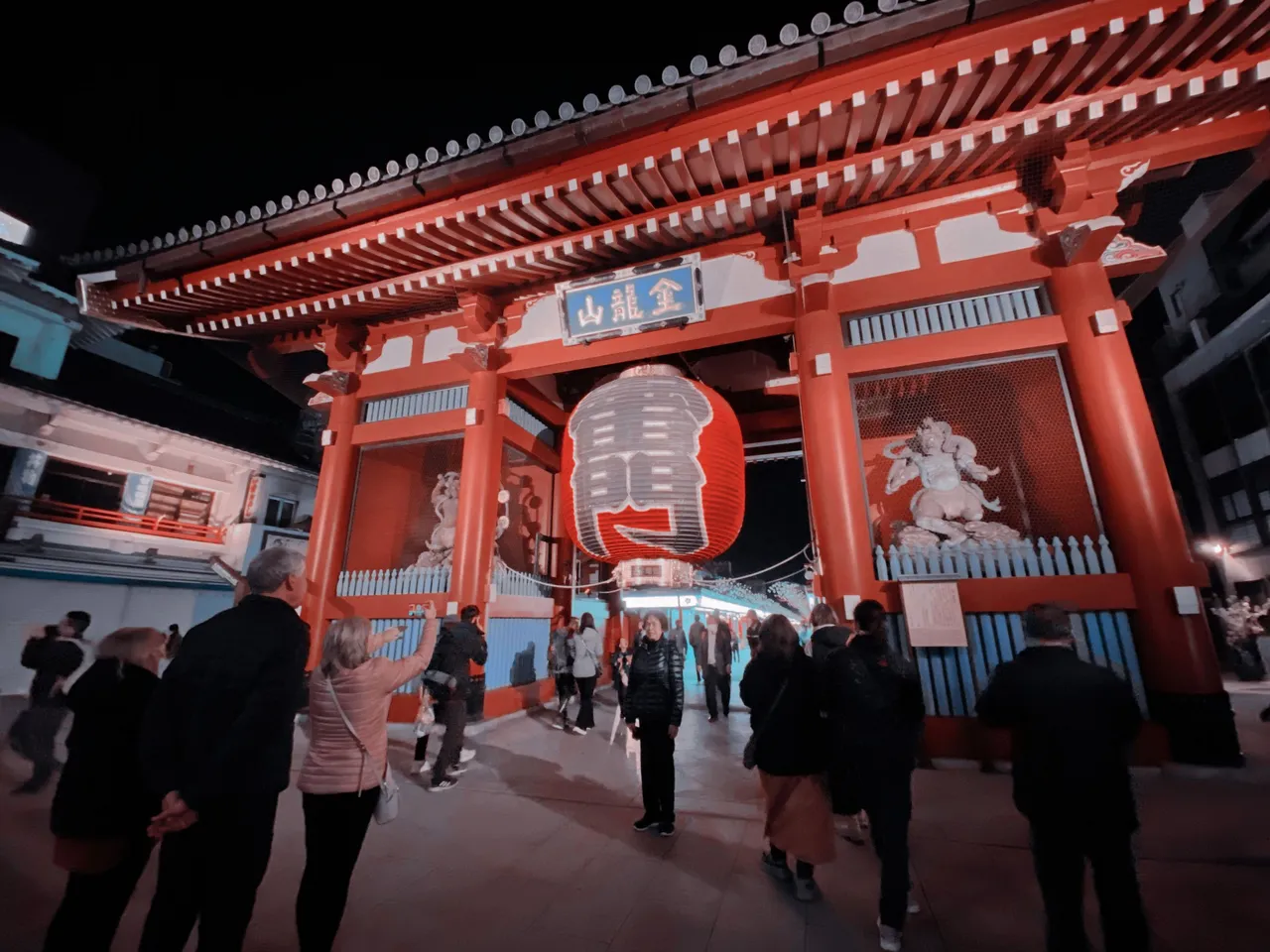
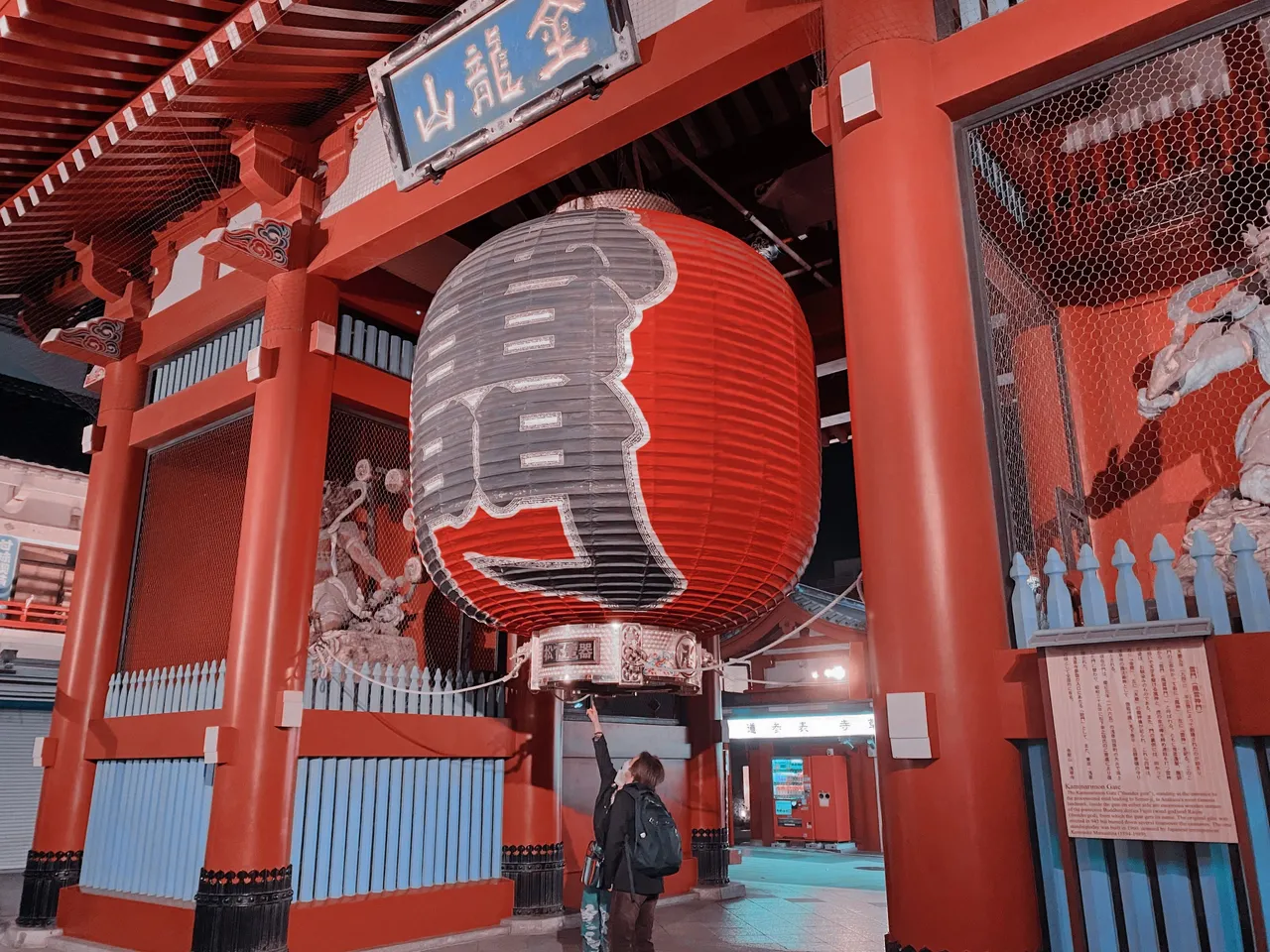
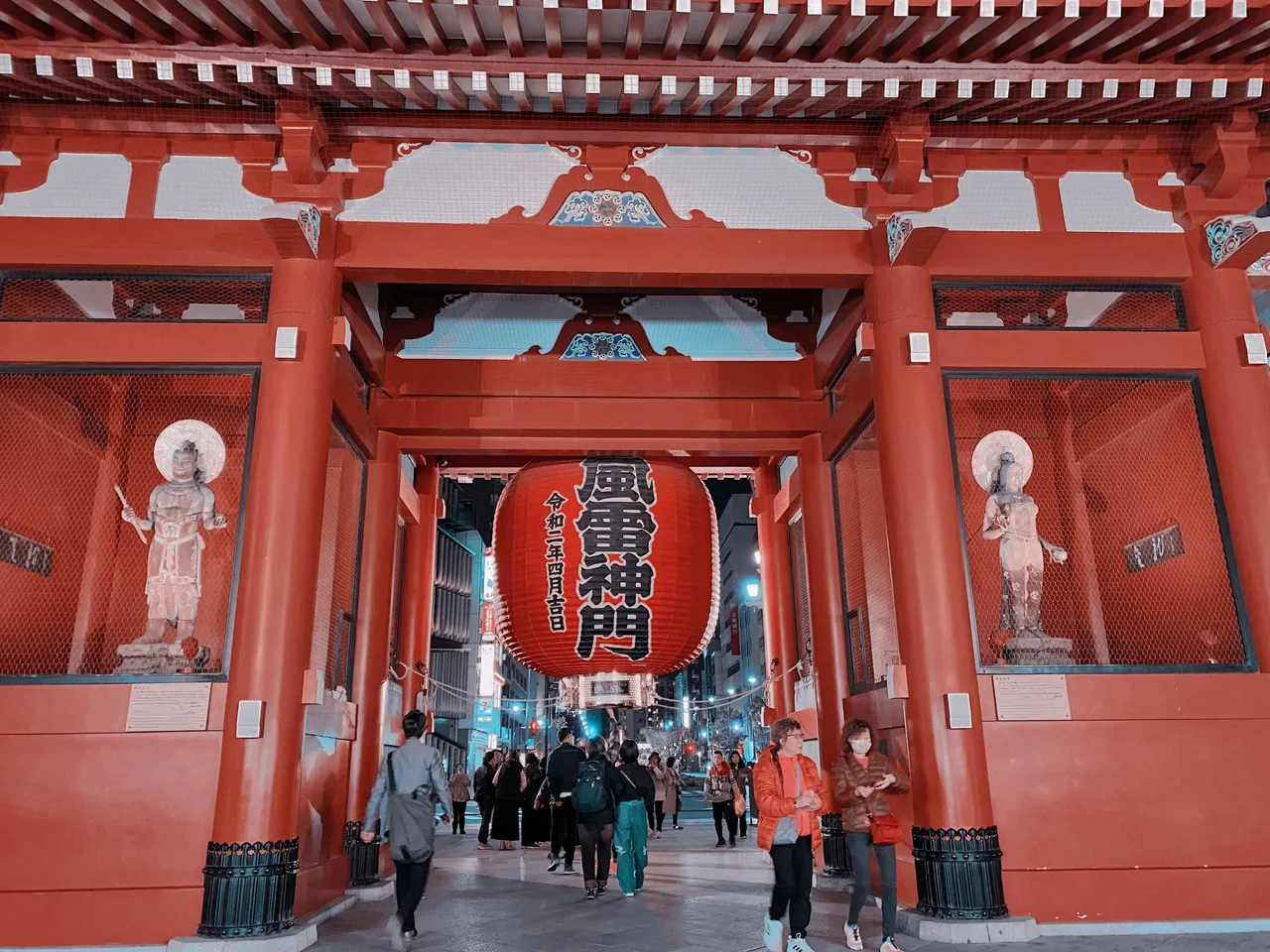
The Hozomon is the inner gate and it's also as grand as the outer gate. Compared to the outer gate, the Hozomon has 3 lanterns. It still has the 2 big Nio statues on both sides which are the guardian dieties of Buddha you would often see in temples of Japan.
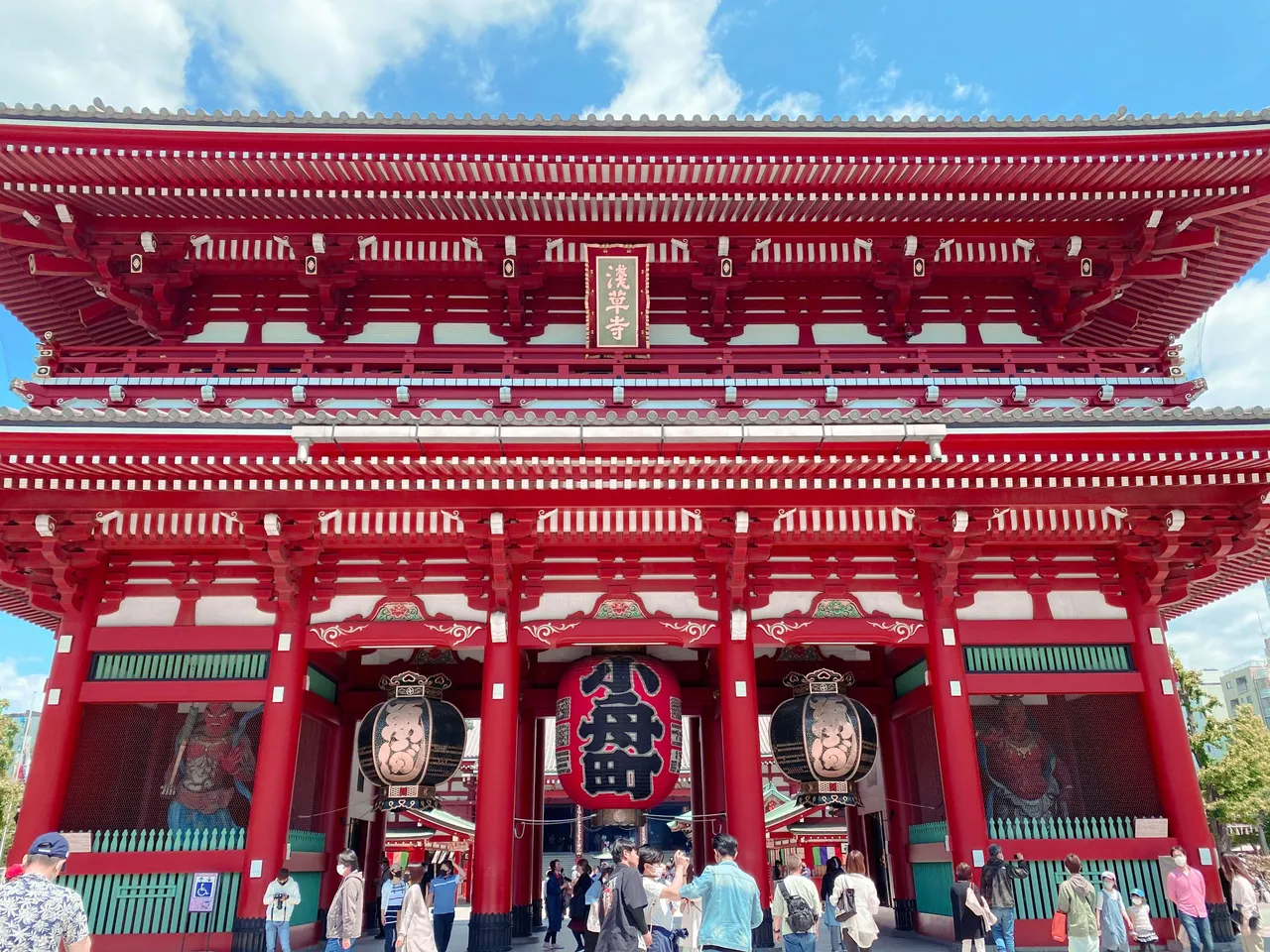

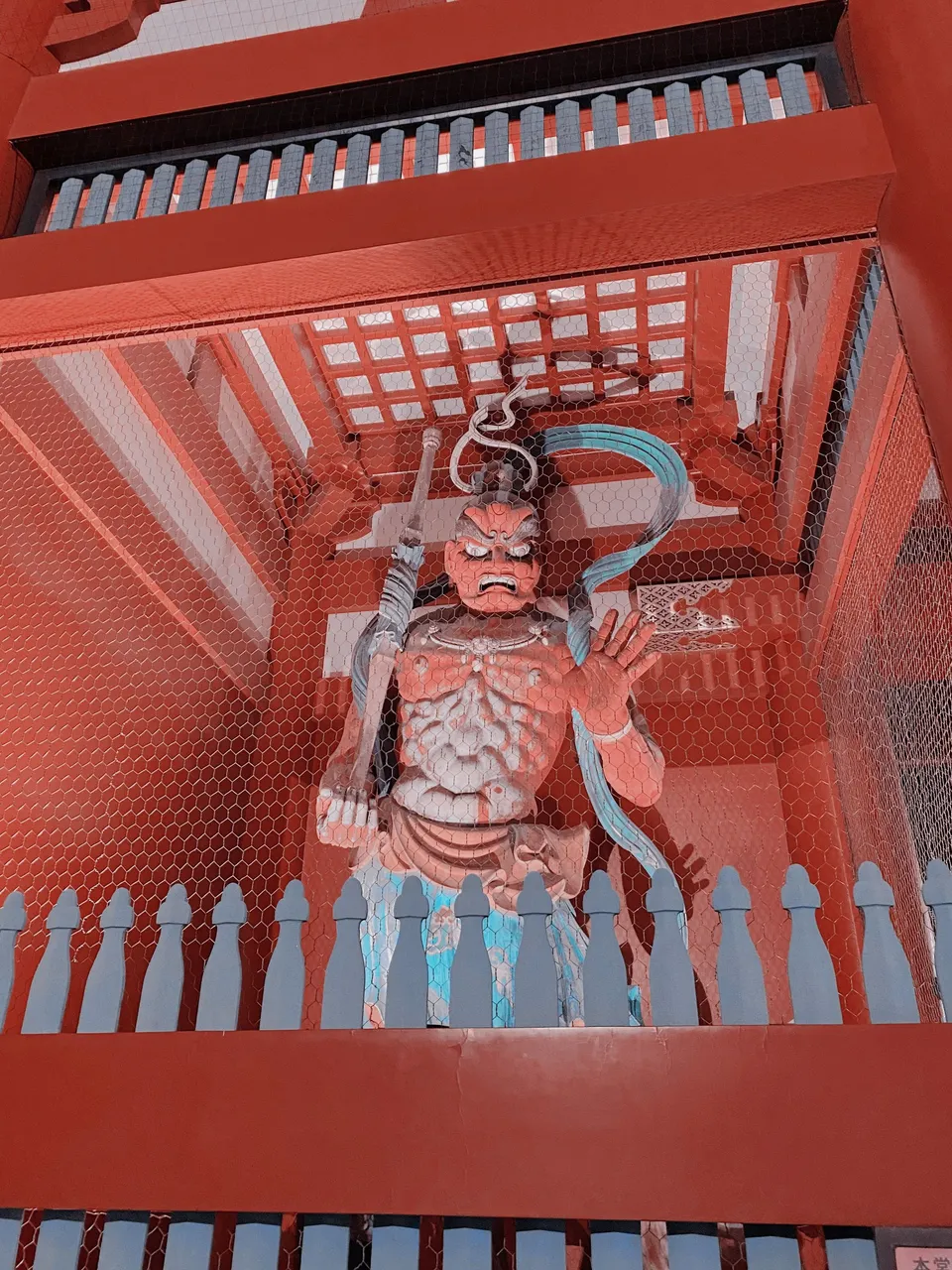
I had the priviledge of seeing the bottom of the lantern when I passed through the gate. The details are just so great of an artwork.
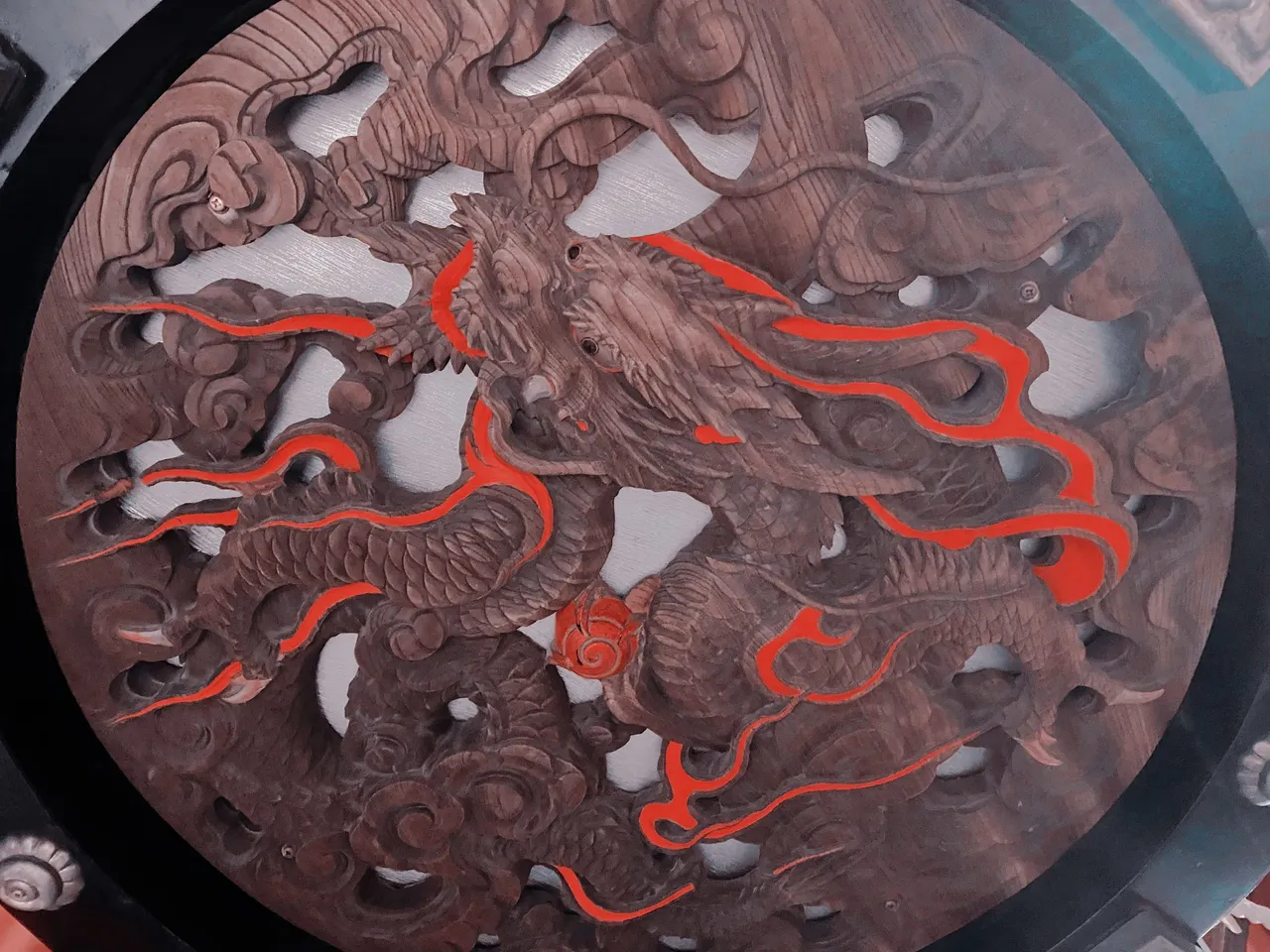
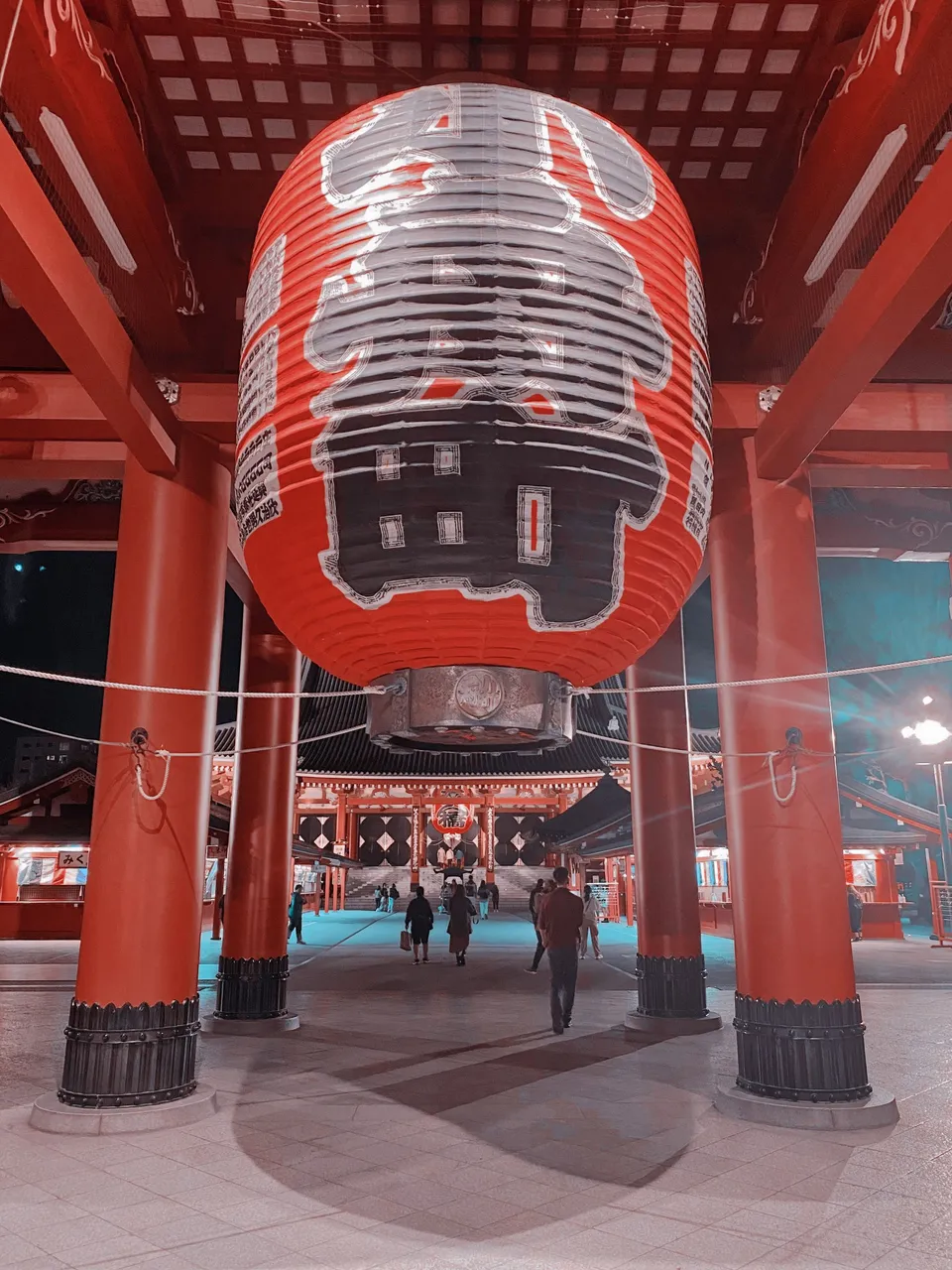 | 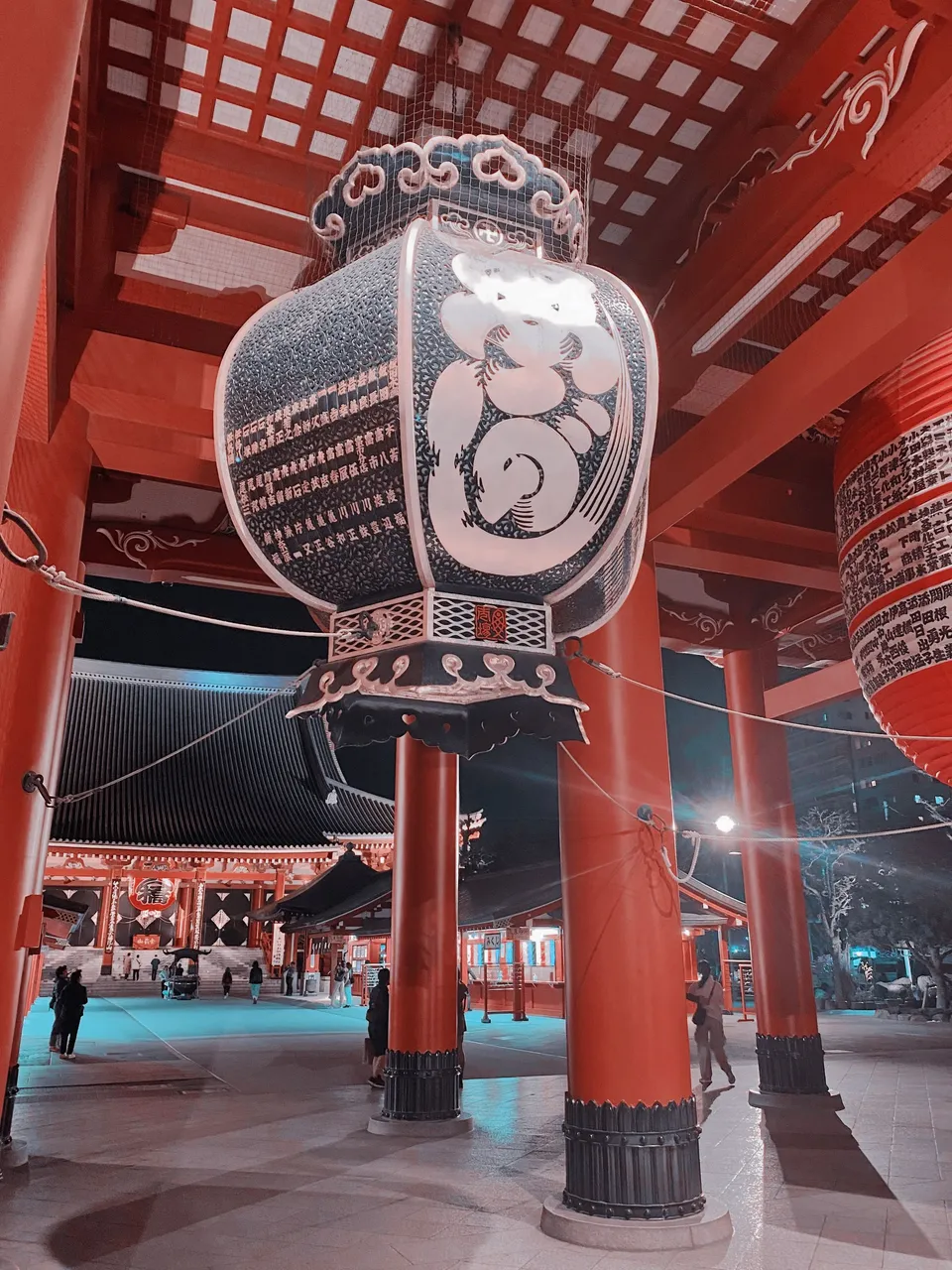 |
|---|
The five-story pagoda is such an attention grabber when you're in the temple premises. It's so grand, even at night.
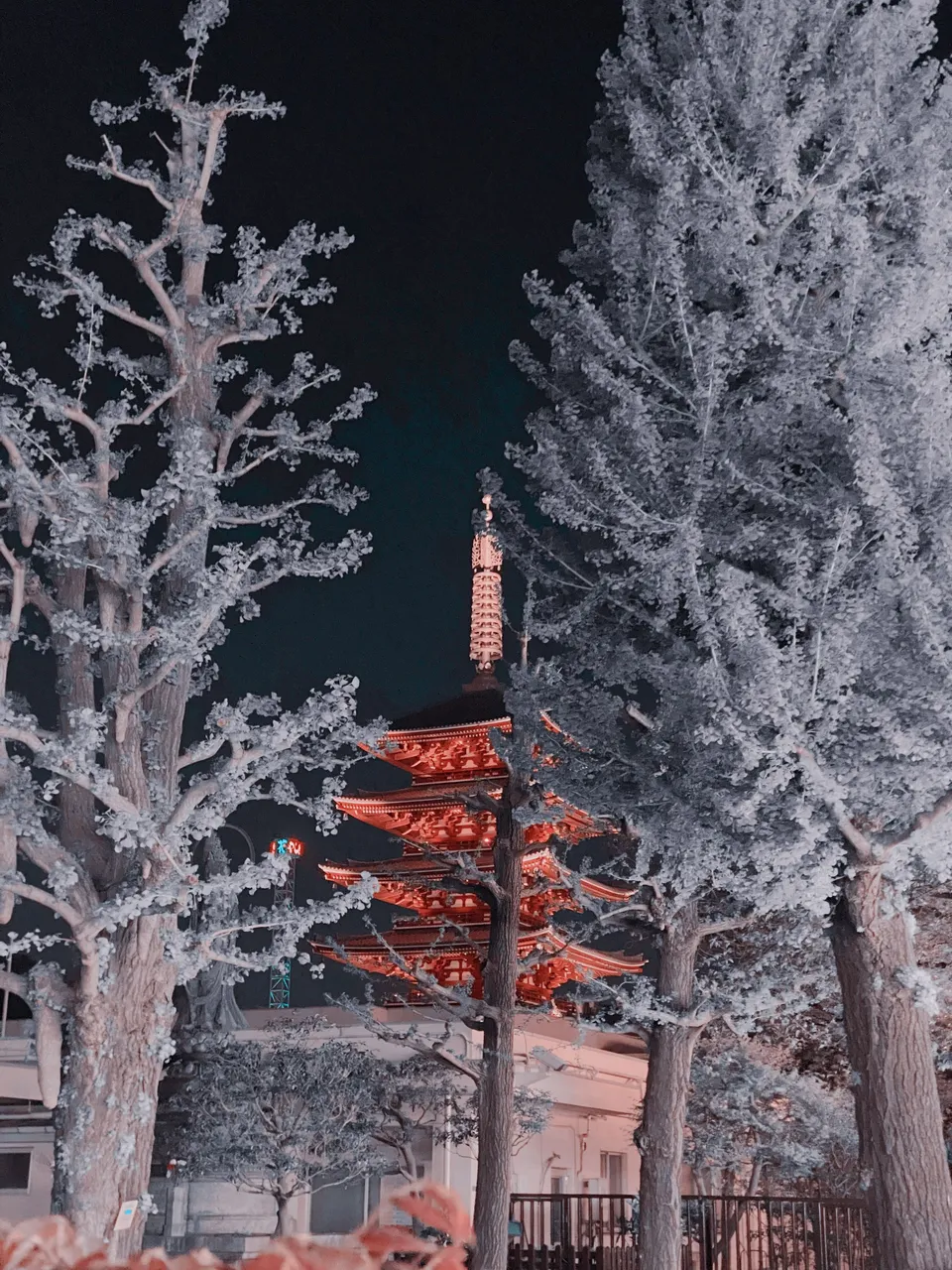

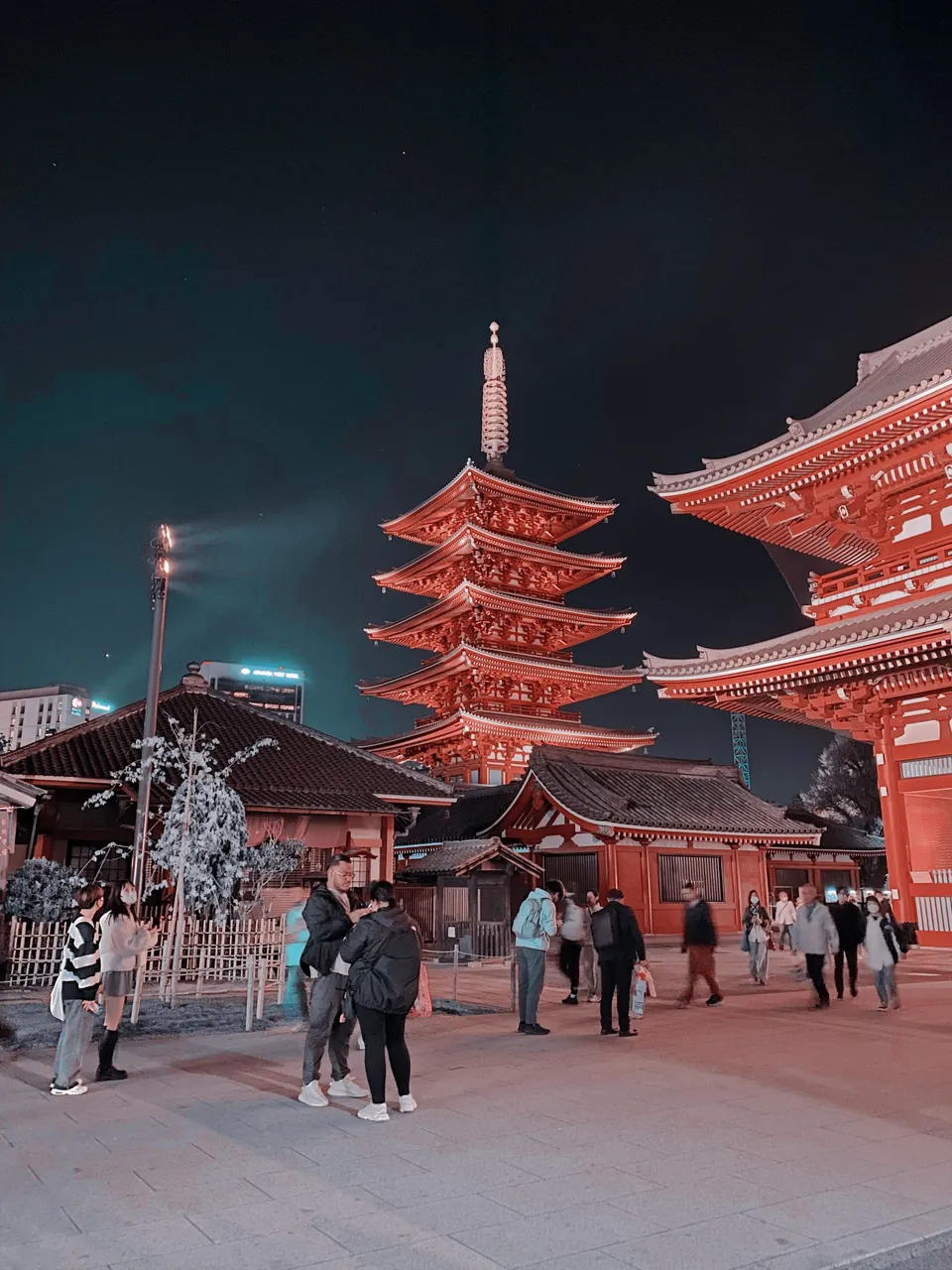
I don't know but there's just something about pagodas that you would really get attracted to. Did you know that the 5 levels of pagoda represent something? It represents earth, water, fire, wind and space (or sky).
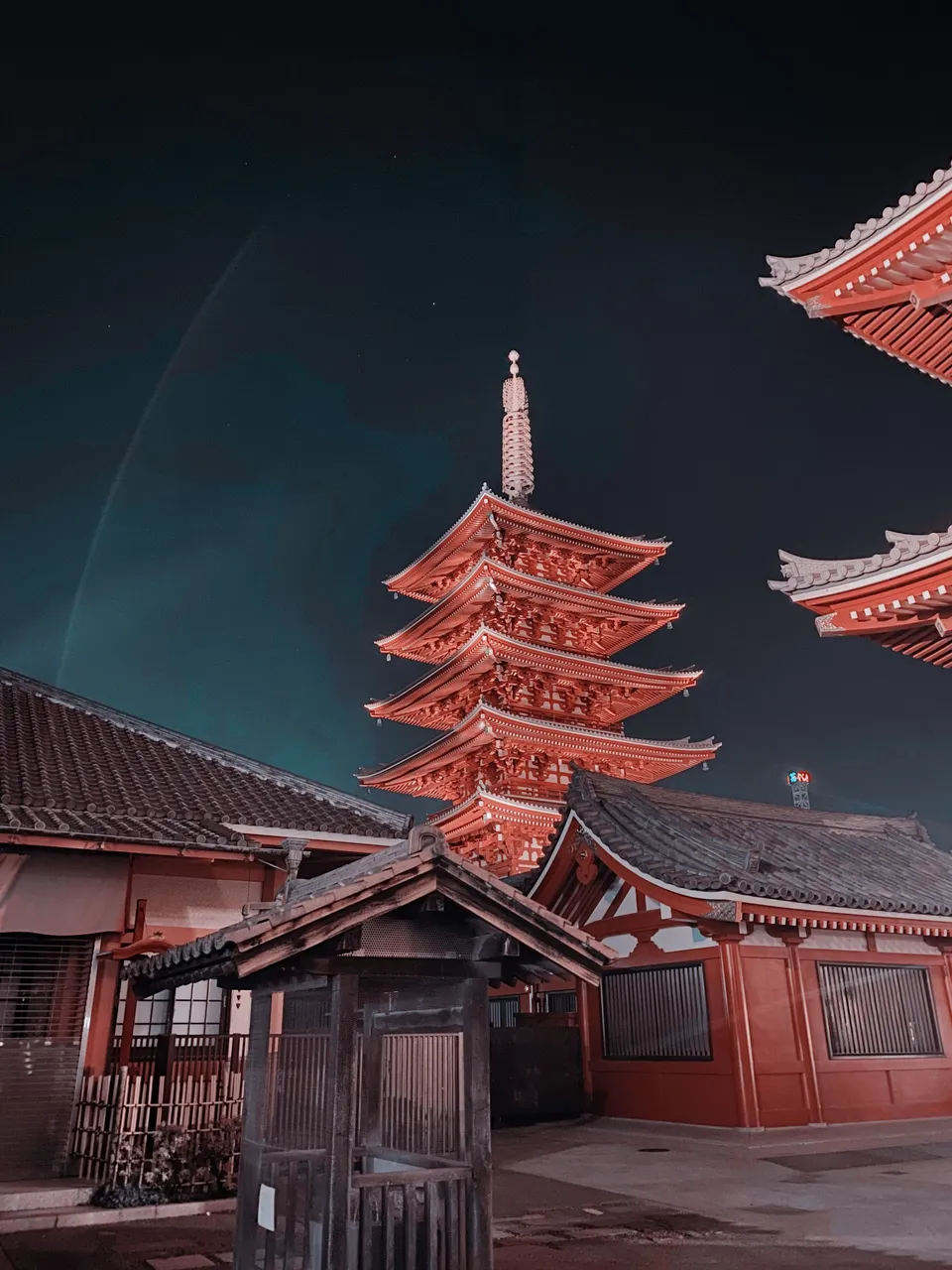 | 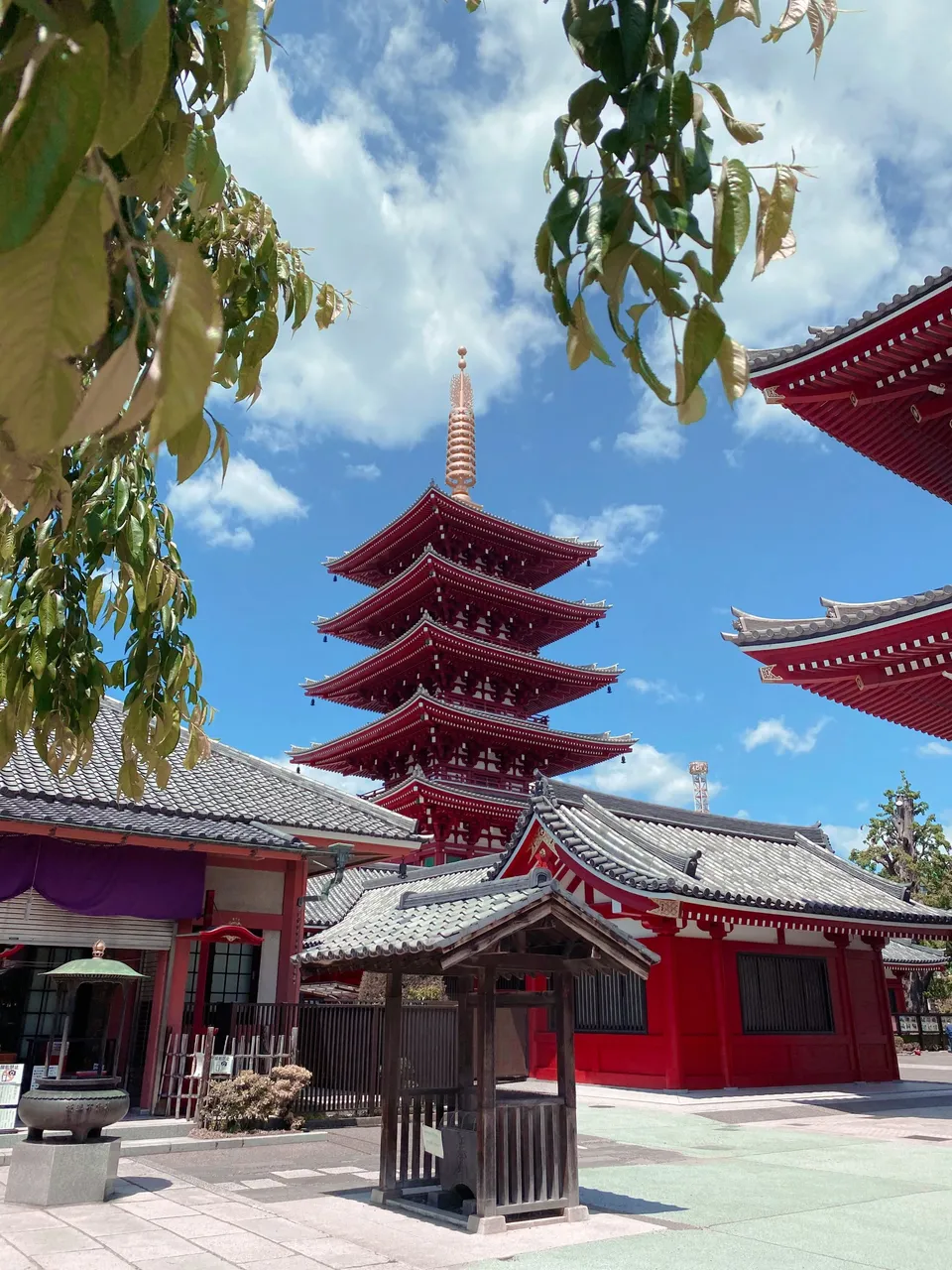 |
|---|
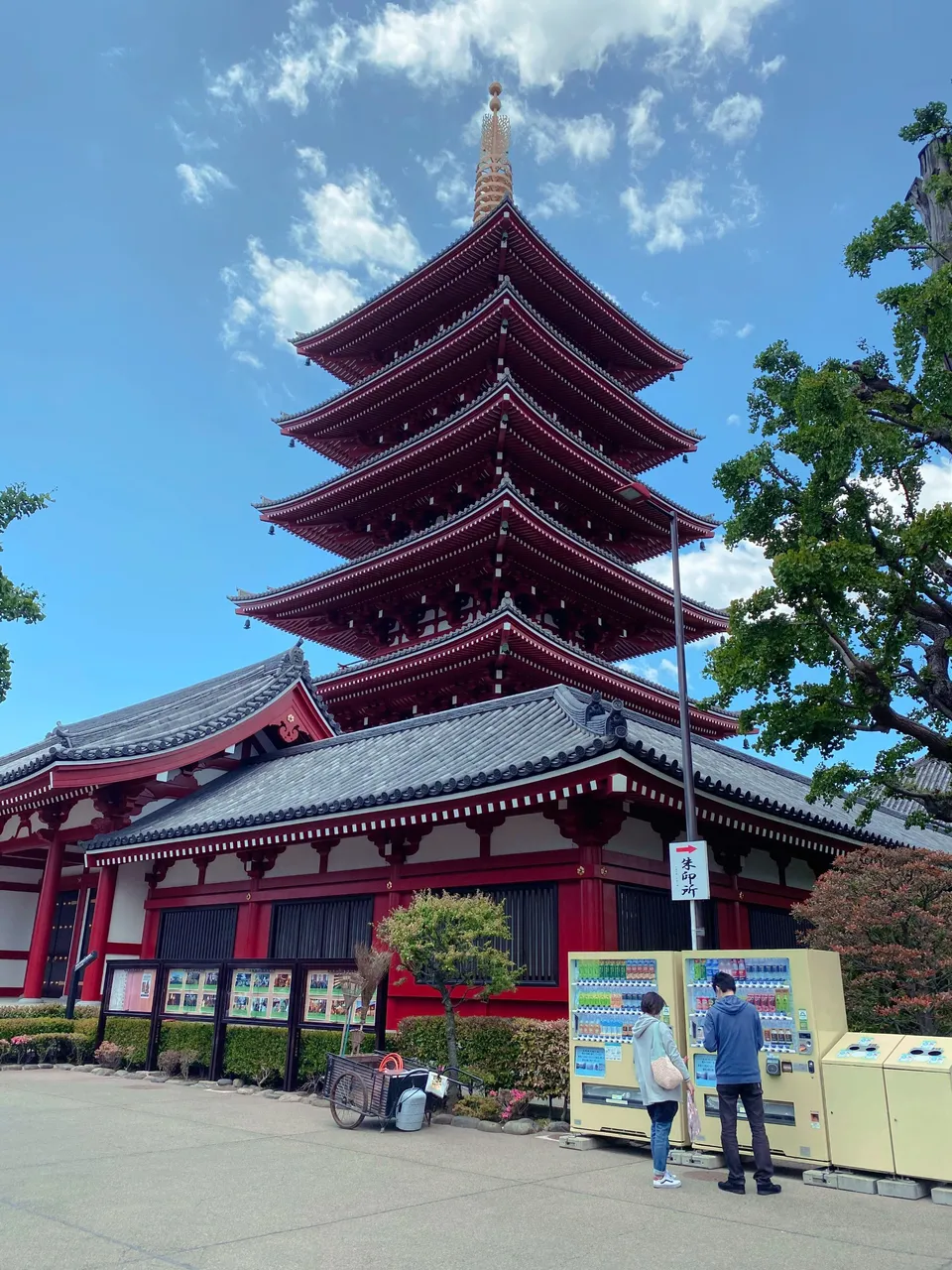
Before reaching the main hall, we tried checking our fortunes at the omikuji corner. It's not the same as other temples where you will be getting it from a box full of papers but instead you will get a number from the aluminum container and locate that number in the small cabinet. That drawer with the same number will have your fortune on paper.
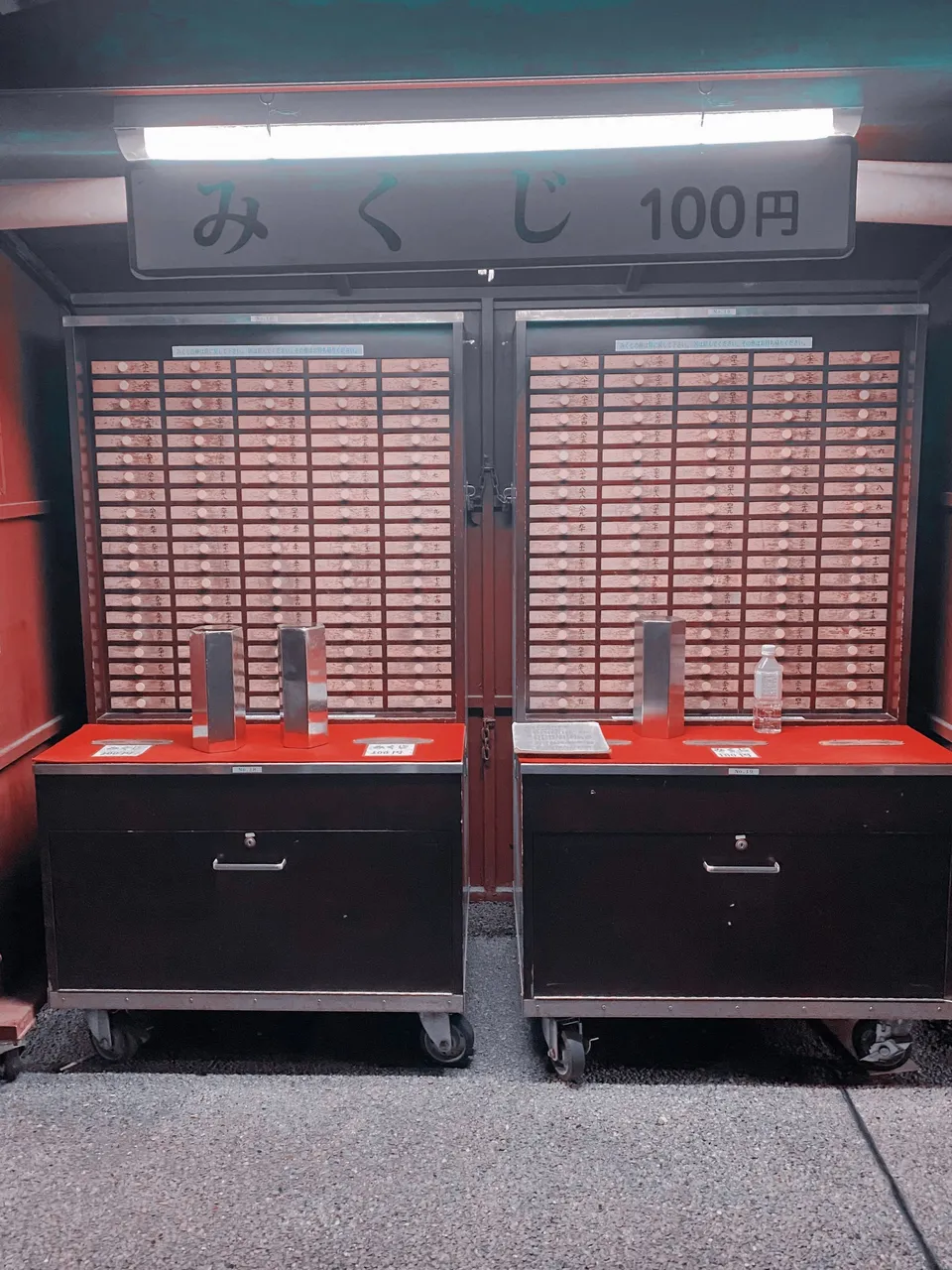
During my 2nd visit when I was alone, I didn't bother to get my fortune. I thought it might have some bad fortune same as when I came here the first time.
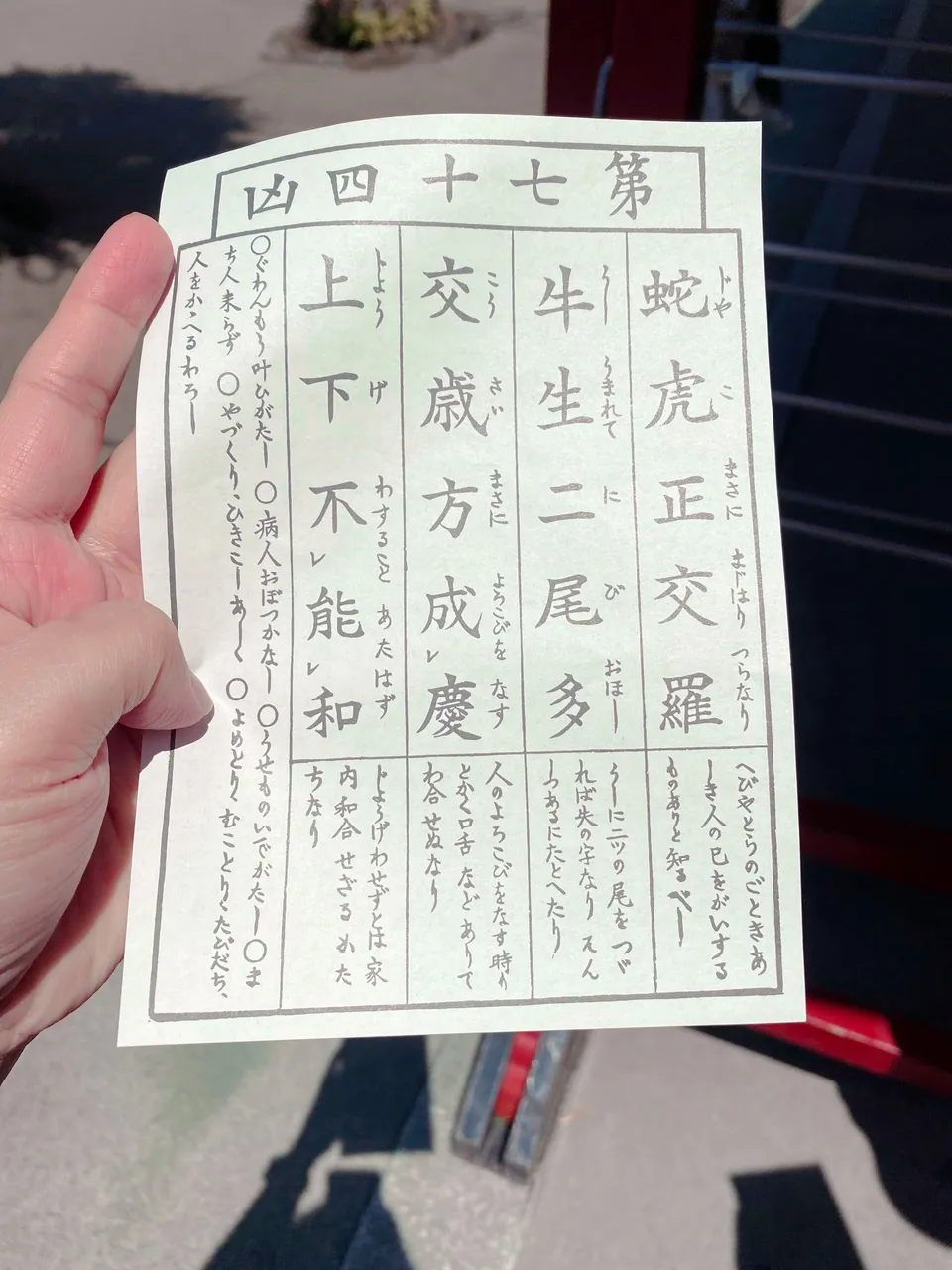
Of course it's all in Japanese but worry not, there's an English translation at the back.

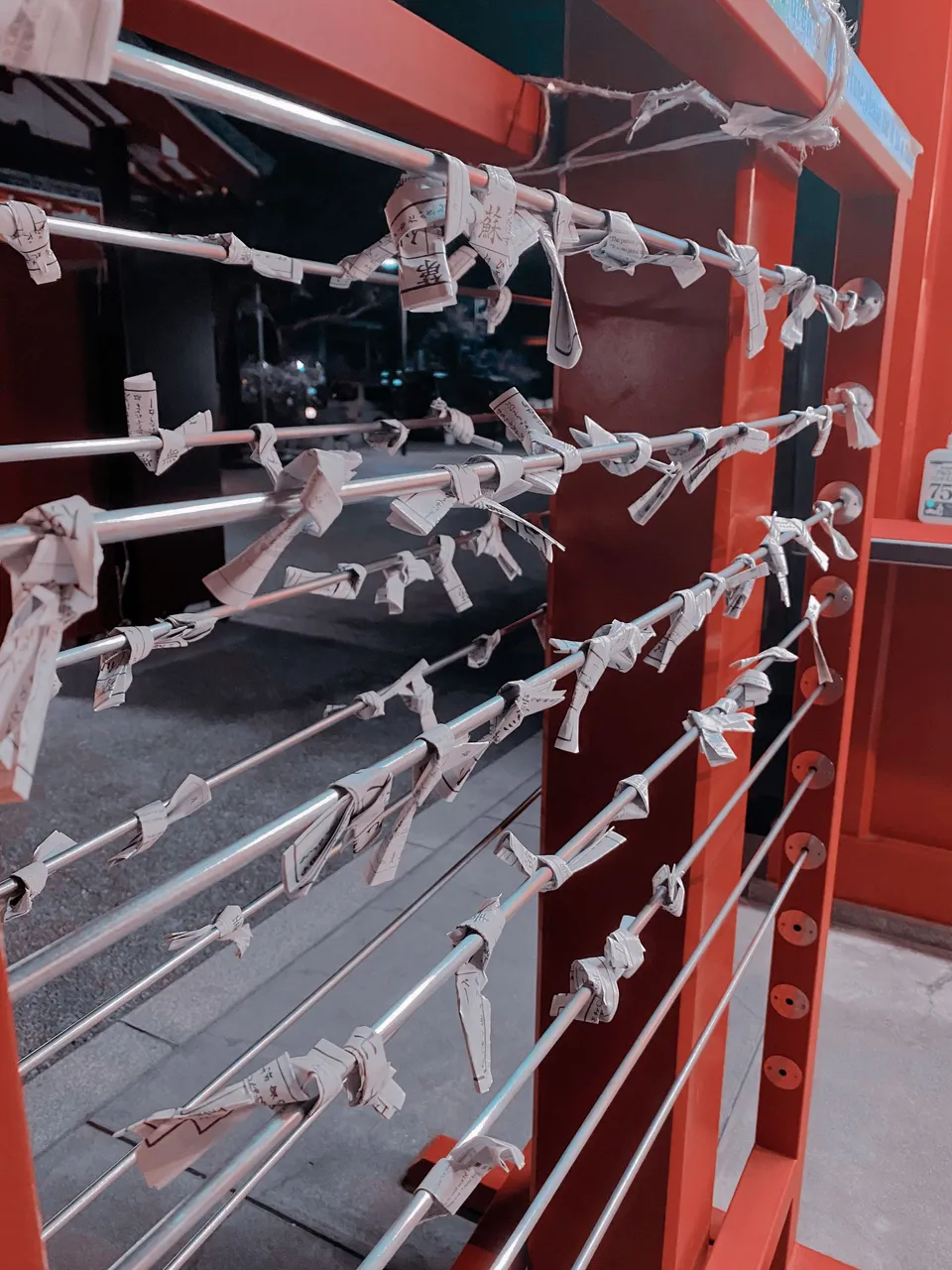
It's customary to tie your bad fortunes here on the temple rather than bringing it home with you. Who knows, the bad fortune might get cancelled.
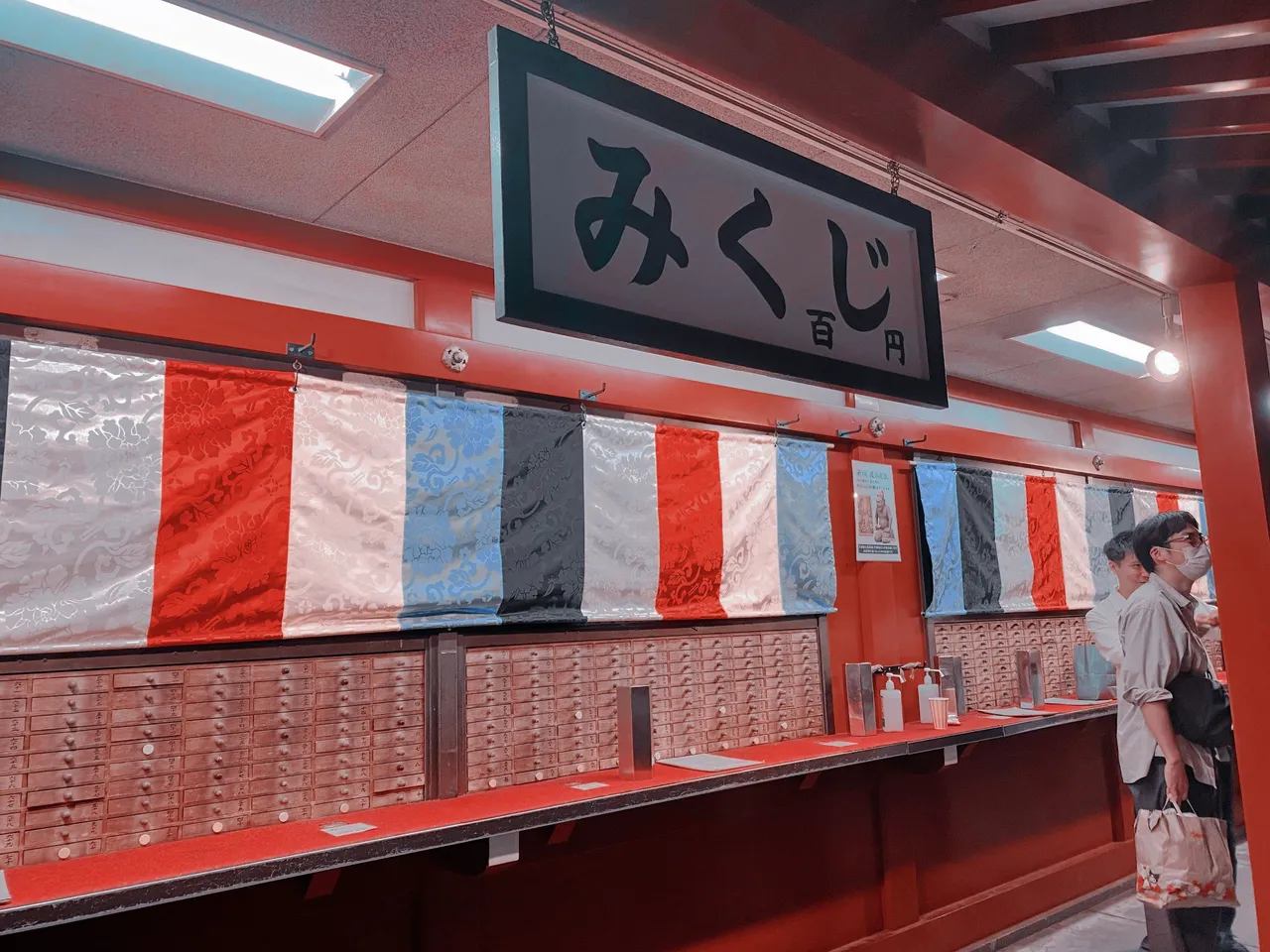
Aside from the omikuji corner which is very popular I also got hooked, you can buy charms here. There are different kinds for different occassions. For sure, there's one suited for your needs. I didn't buy anything though, because one - it's already closed at night when I arrived and two - I don't want to buy my own charms.
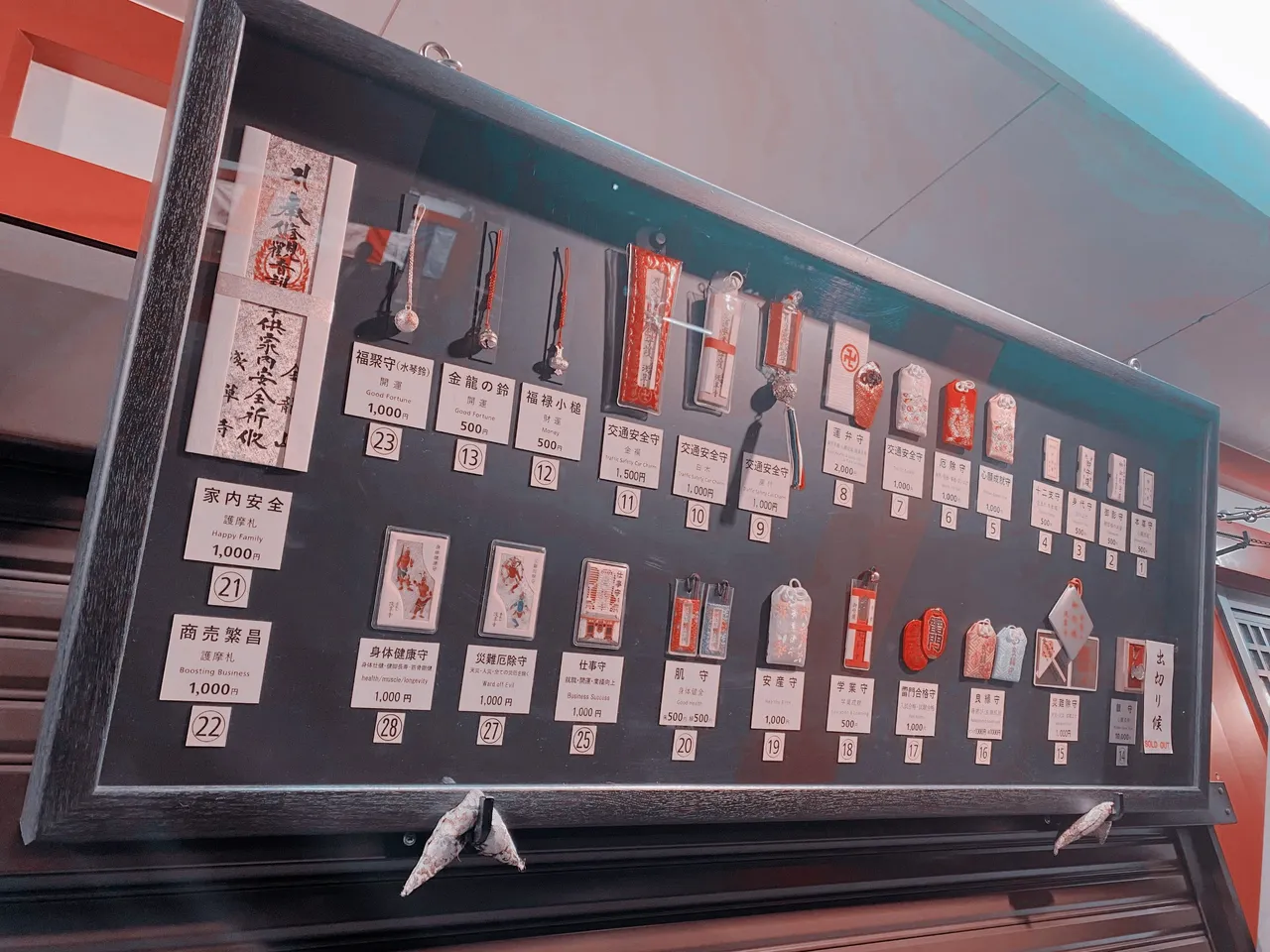
Before praying in the main hall, you must pass through the purification fountain. I can't really tell you the right way to do this because it just comes naturally. CHAROT! Kidding aside, I just follow whatever the Japanese folks are doing. 😅 I couldn't memorize the steps until now.
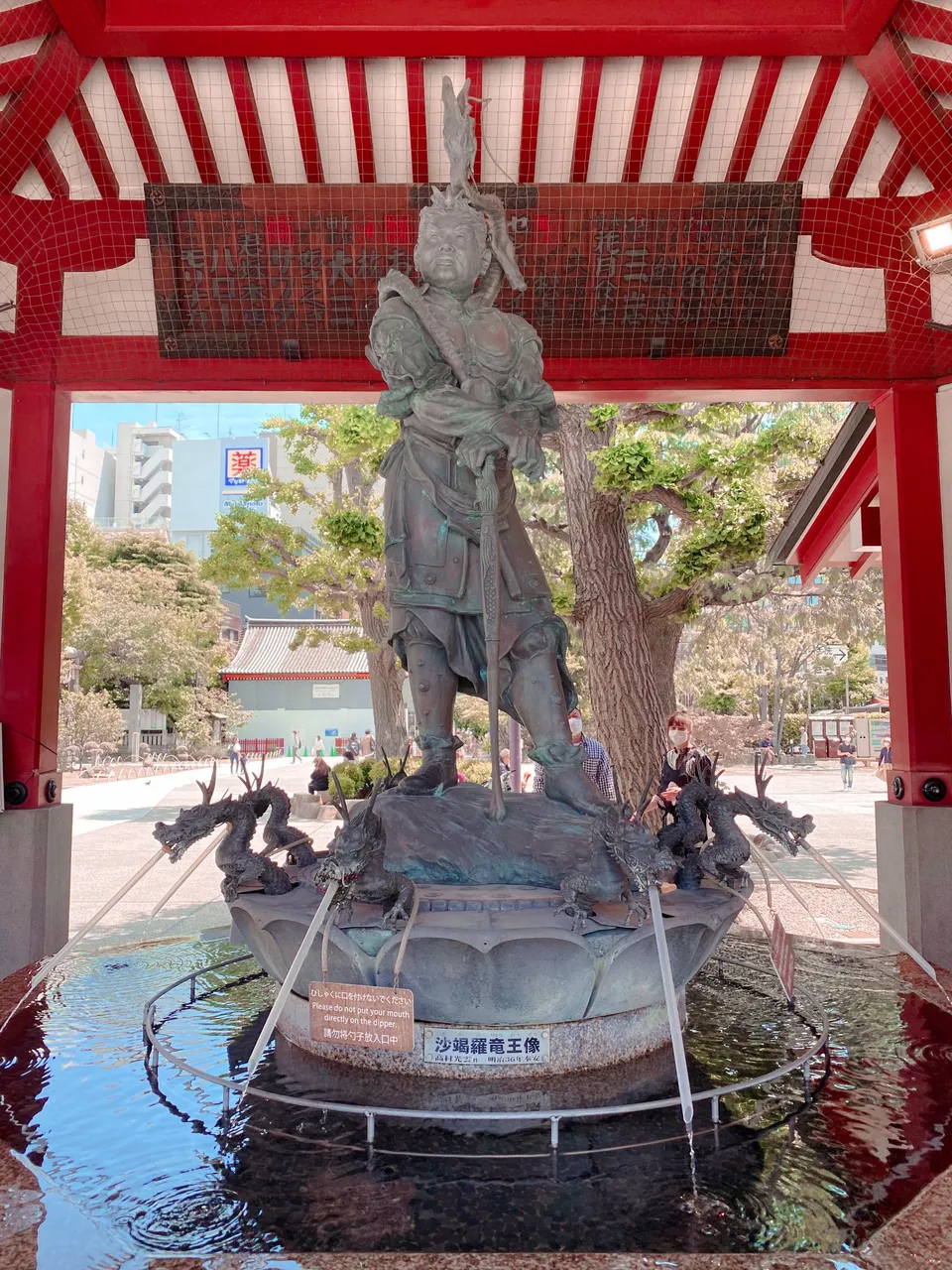
It's said that this man is the Dragon King overlooking the dragon fountain. The artwork at the top of this fountain is such a sight to see too. Yes, that's a dragon!
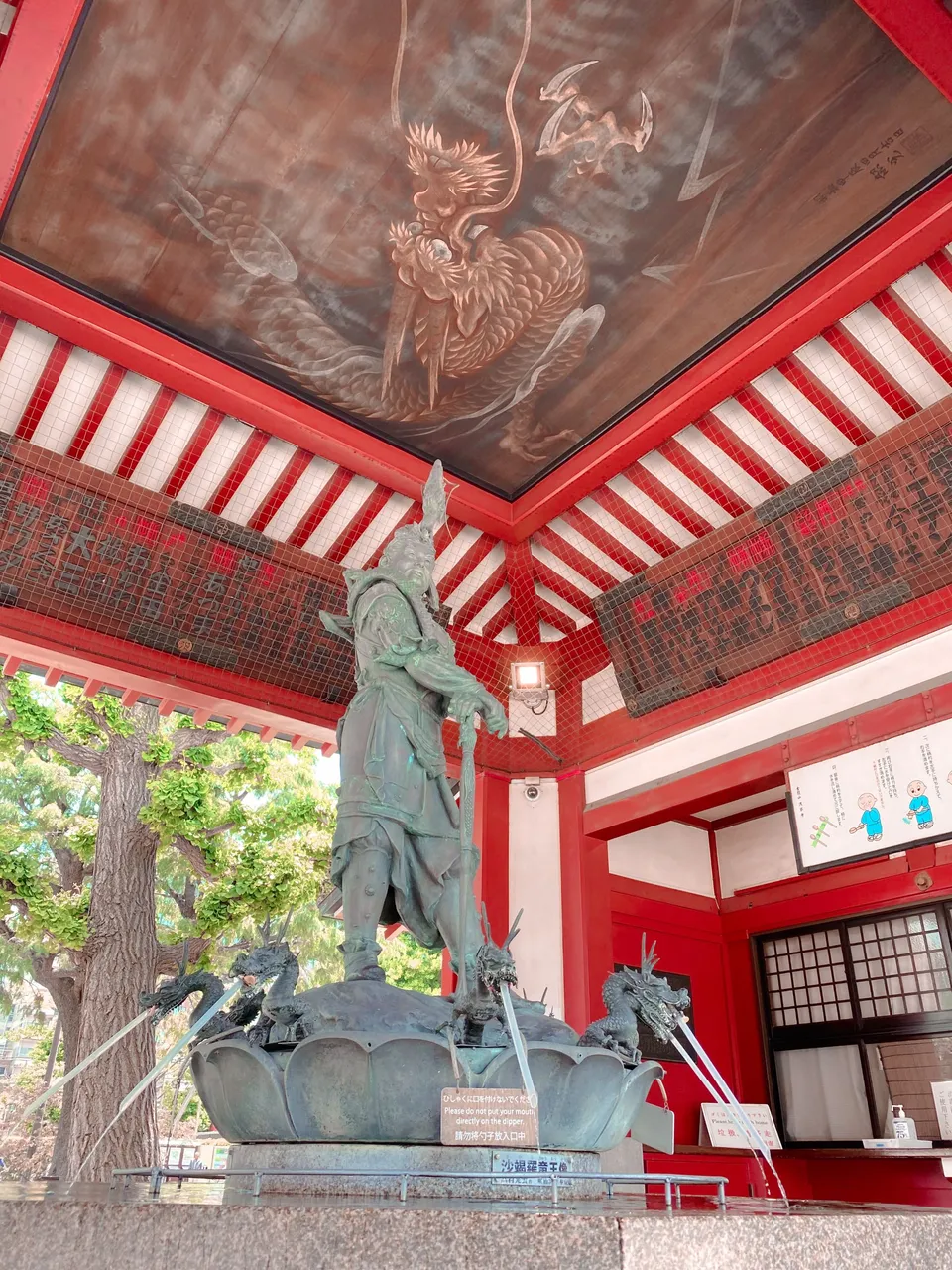
After purifying, we can now proceed to the main hall!
At the main hall, you can offer your prayers and respects. It has a big lantern. On its side are big structures I don't know what they're called but I'm pretty sure they have a significant meaning.

The main hall is dedicated to Kannon, the goddess of mercy.
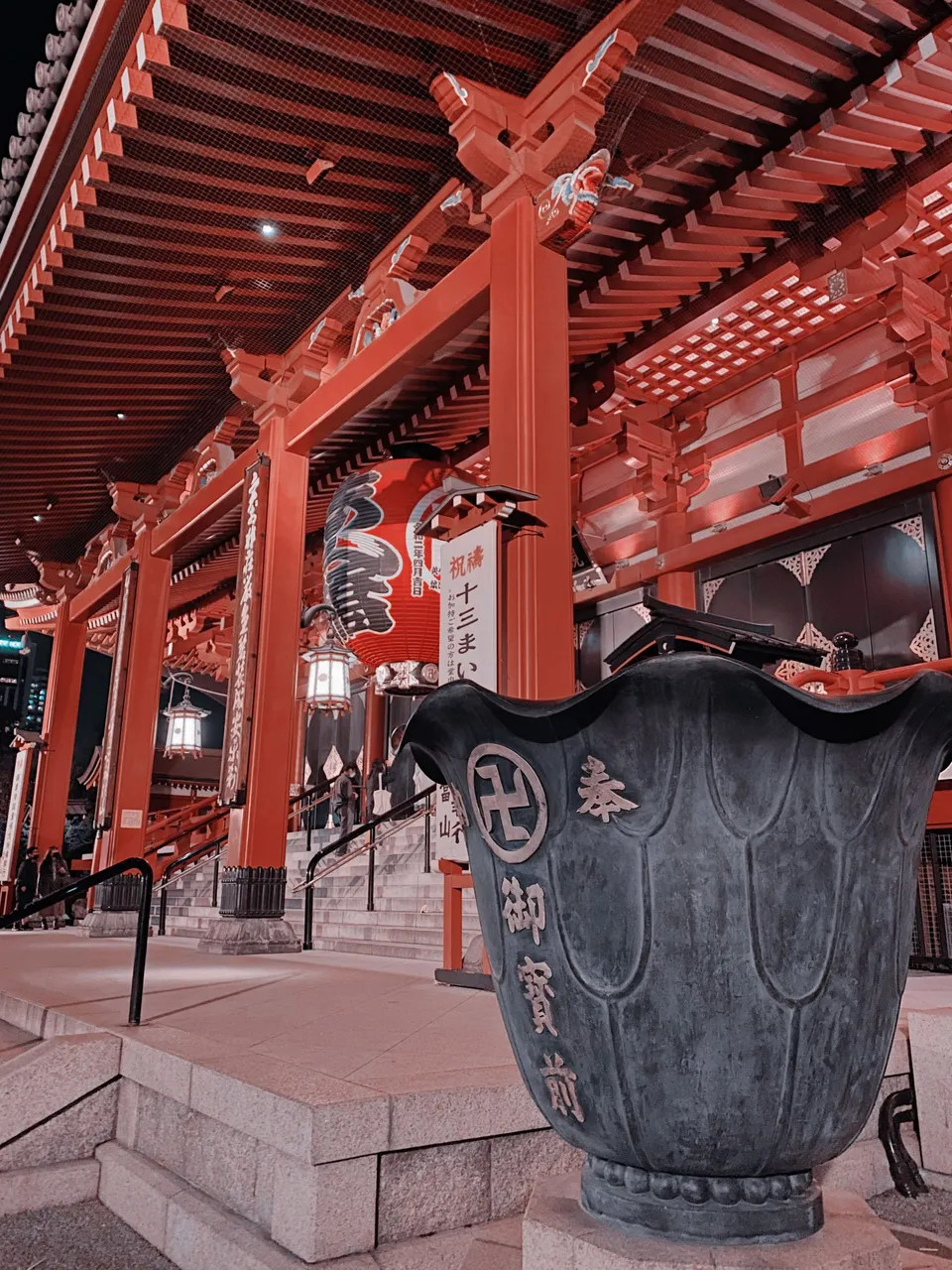
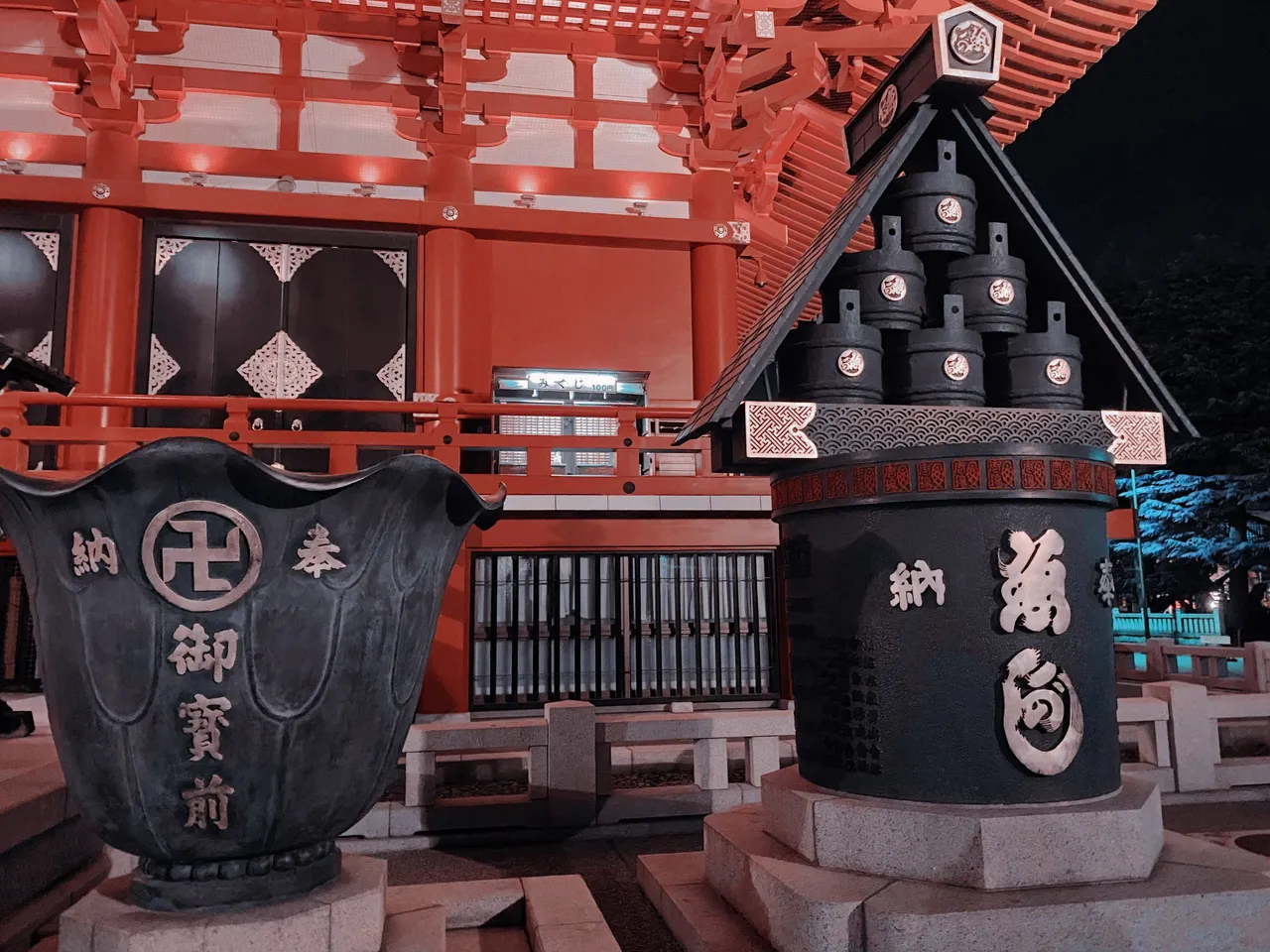
Day and night at this temple was really amazing. It's still grand. It's still beautiful. There weren't a lot of people at night time so it's perfect to stroll but I strolled more during the day that I came here with my friends.
We discovered there's a garden nearby and a small river. So many kois too!

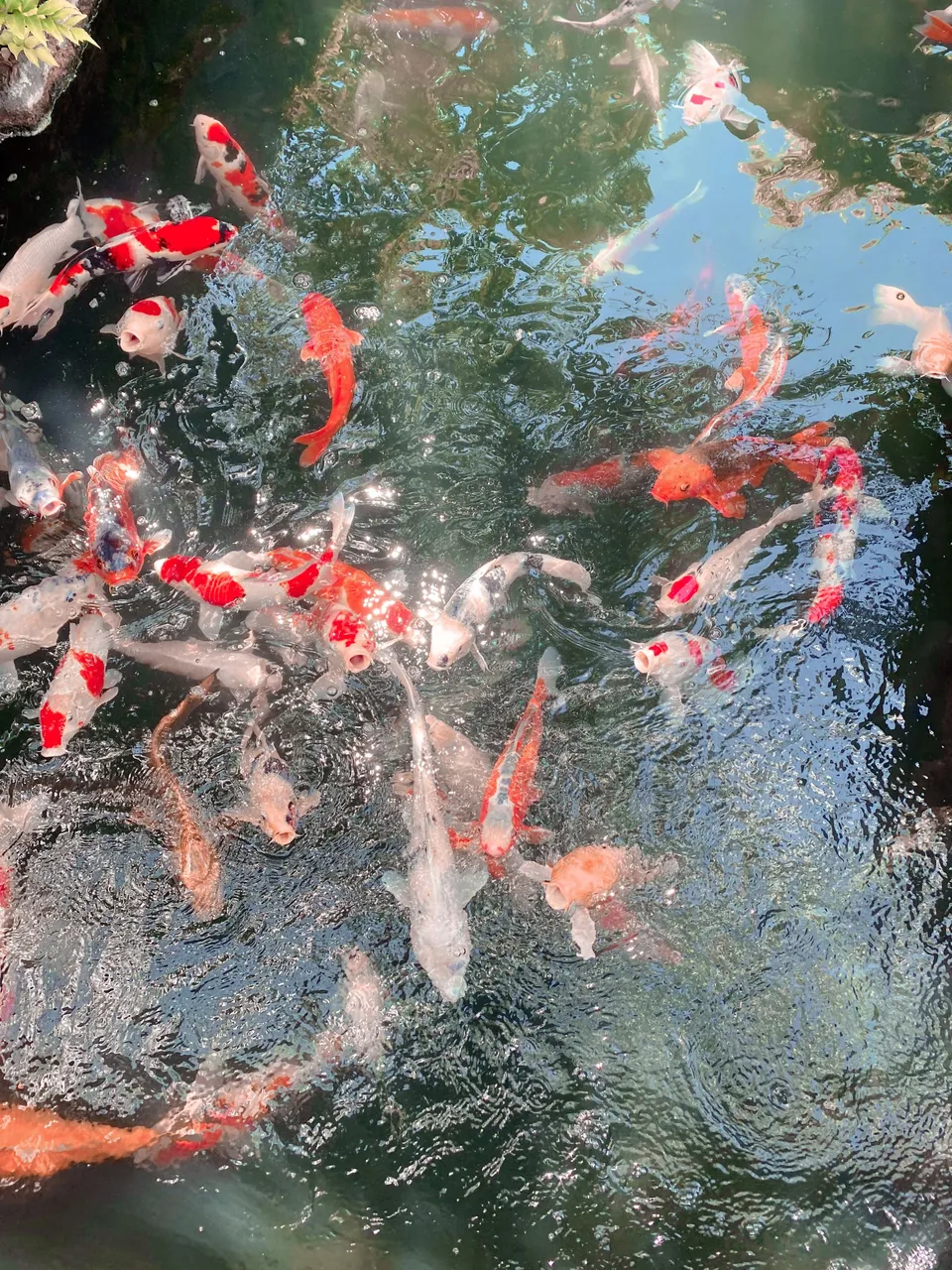
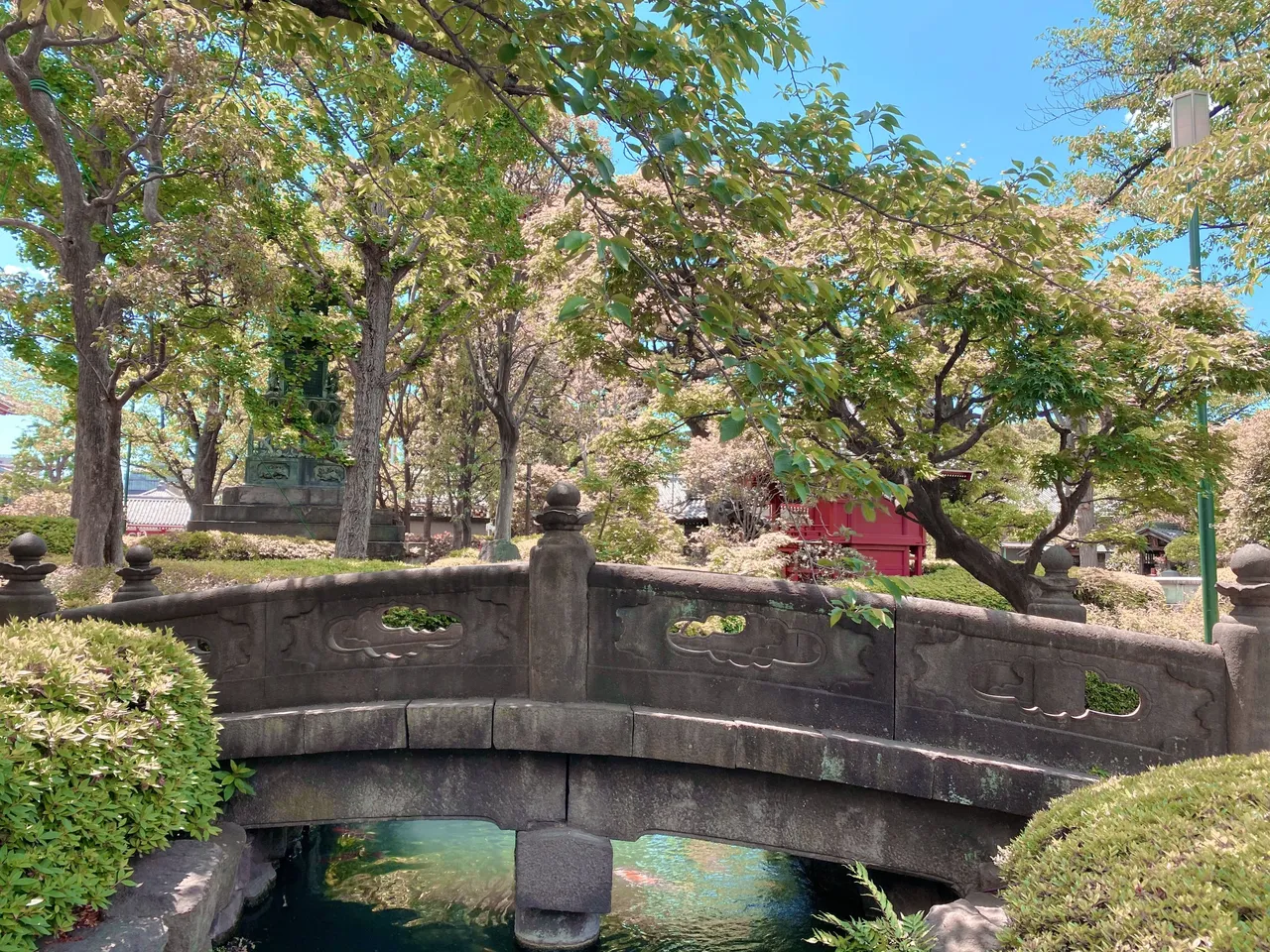
Because it's such a nice place, we thought of taking a lot of photos of ourselves. 😄 This is me in 2021 - my hair was still so long.
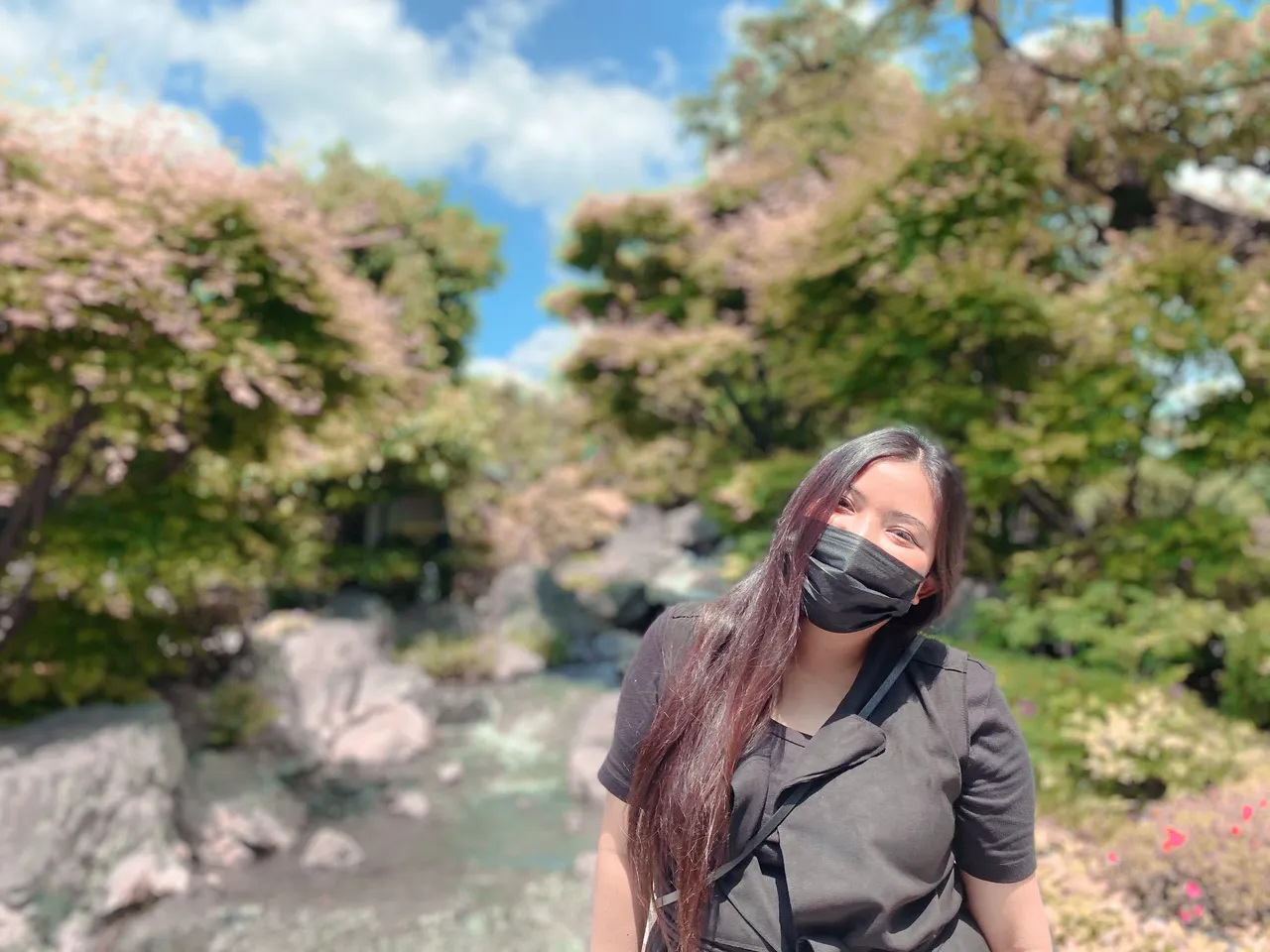
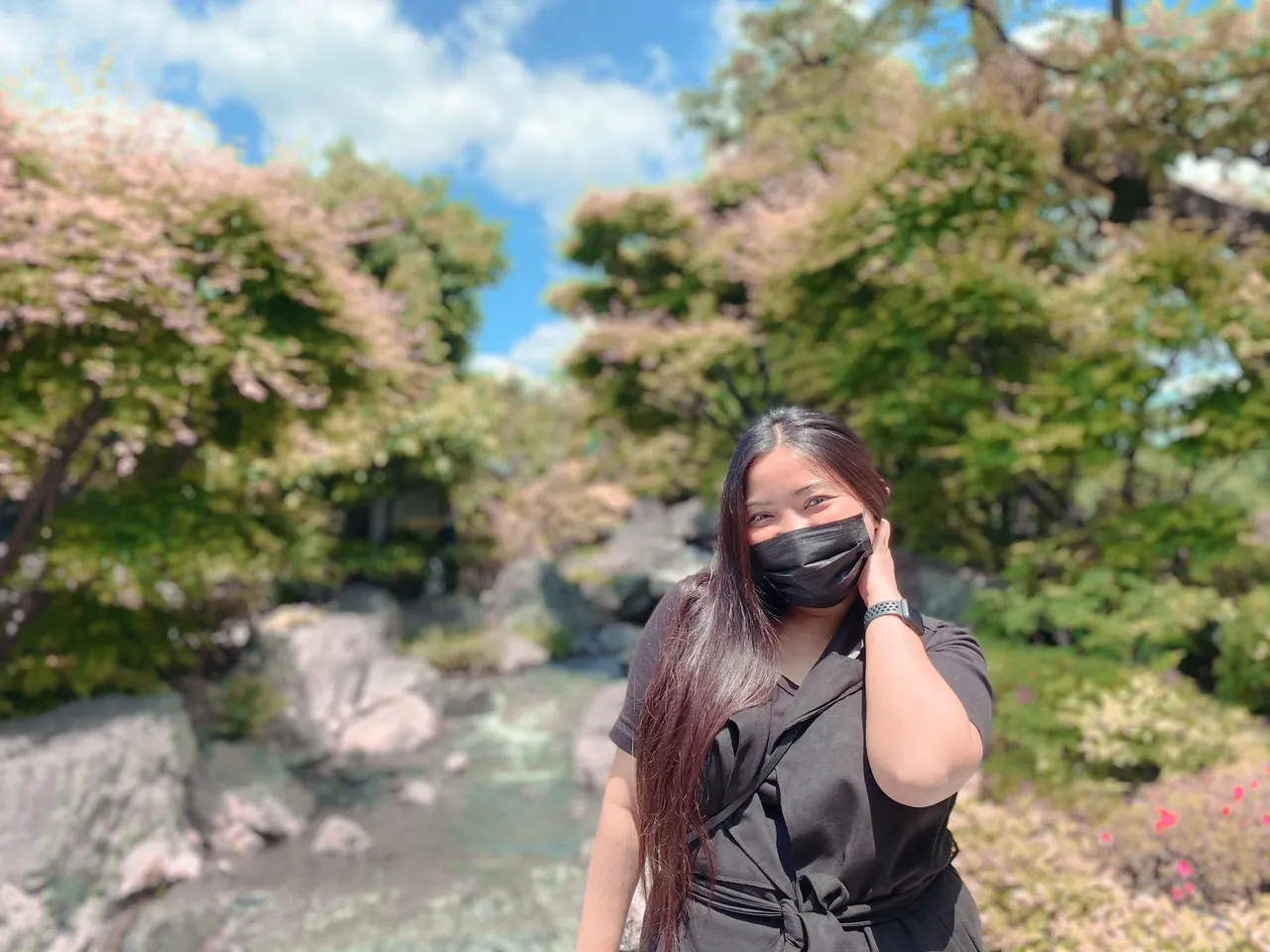 | 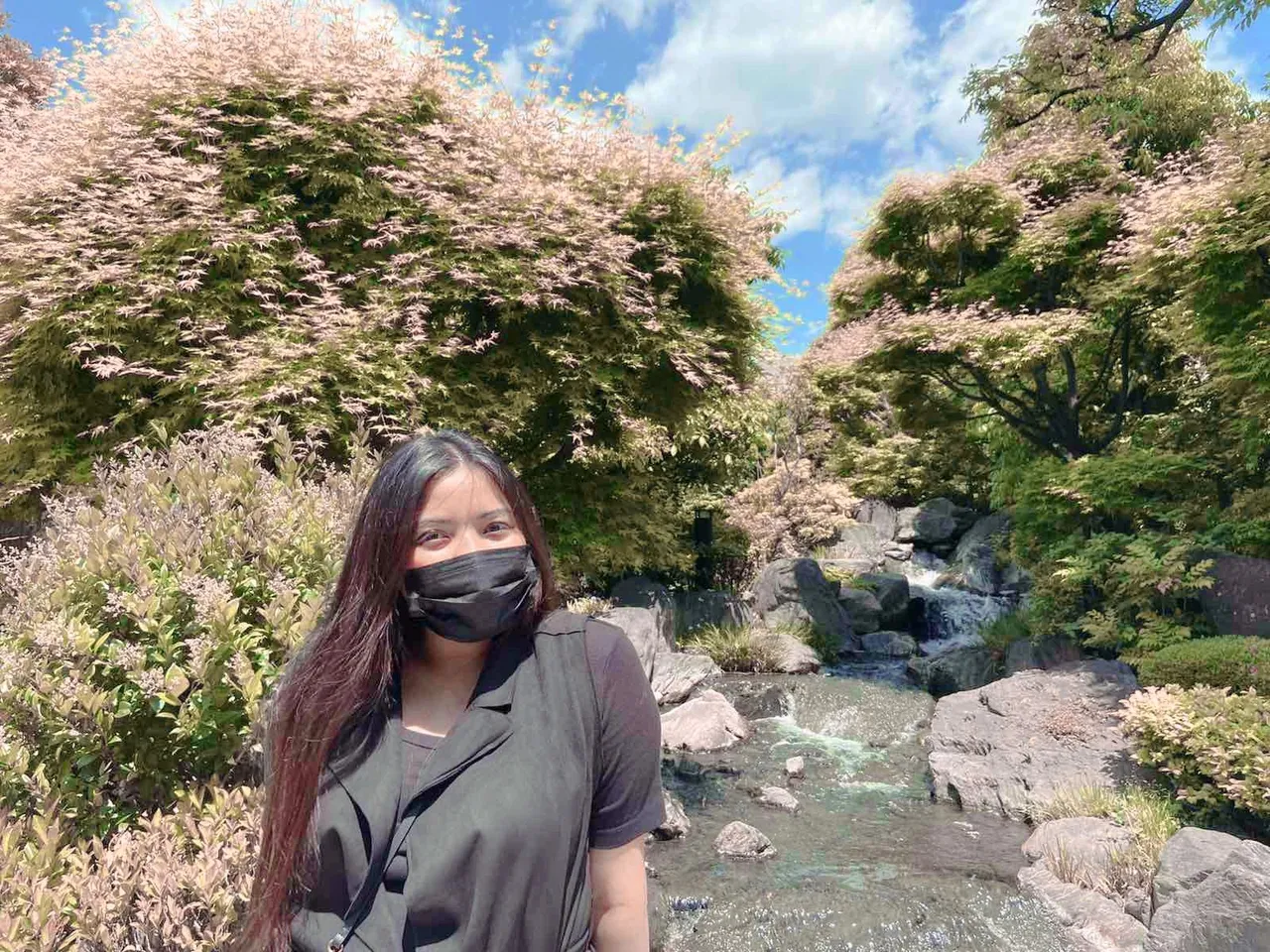 |
|---|
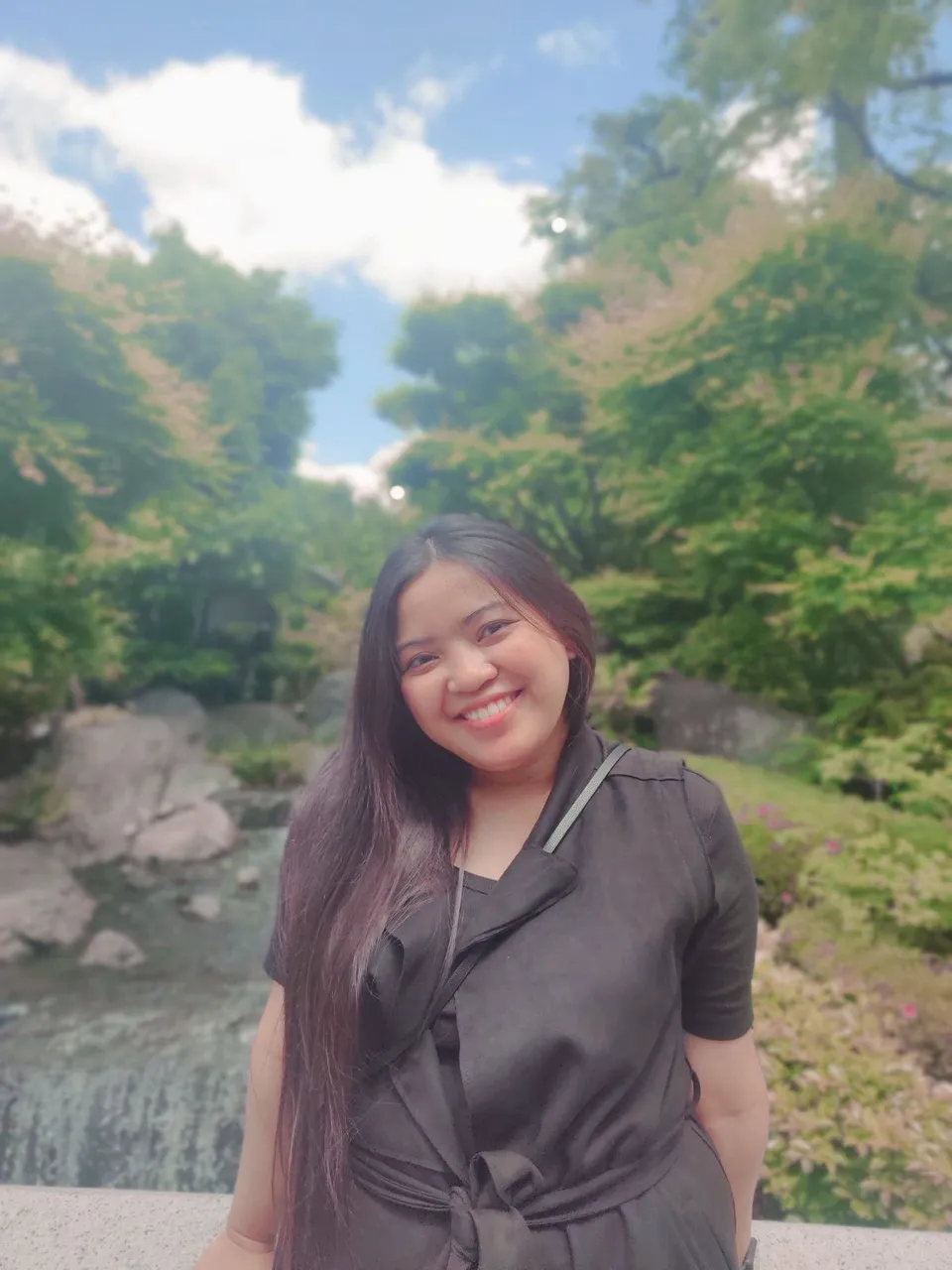
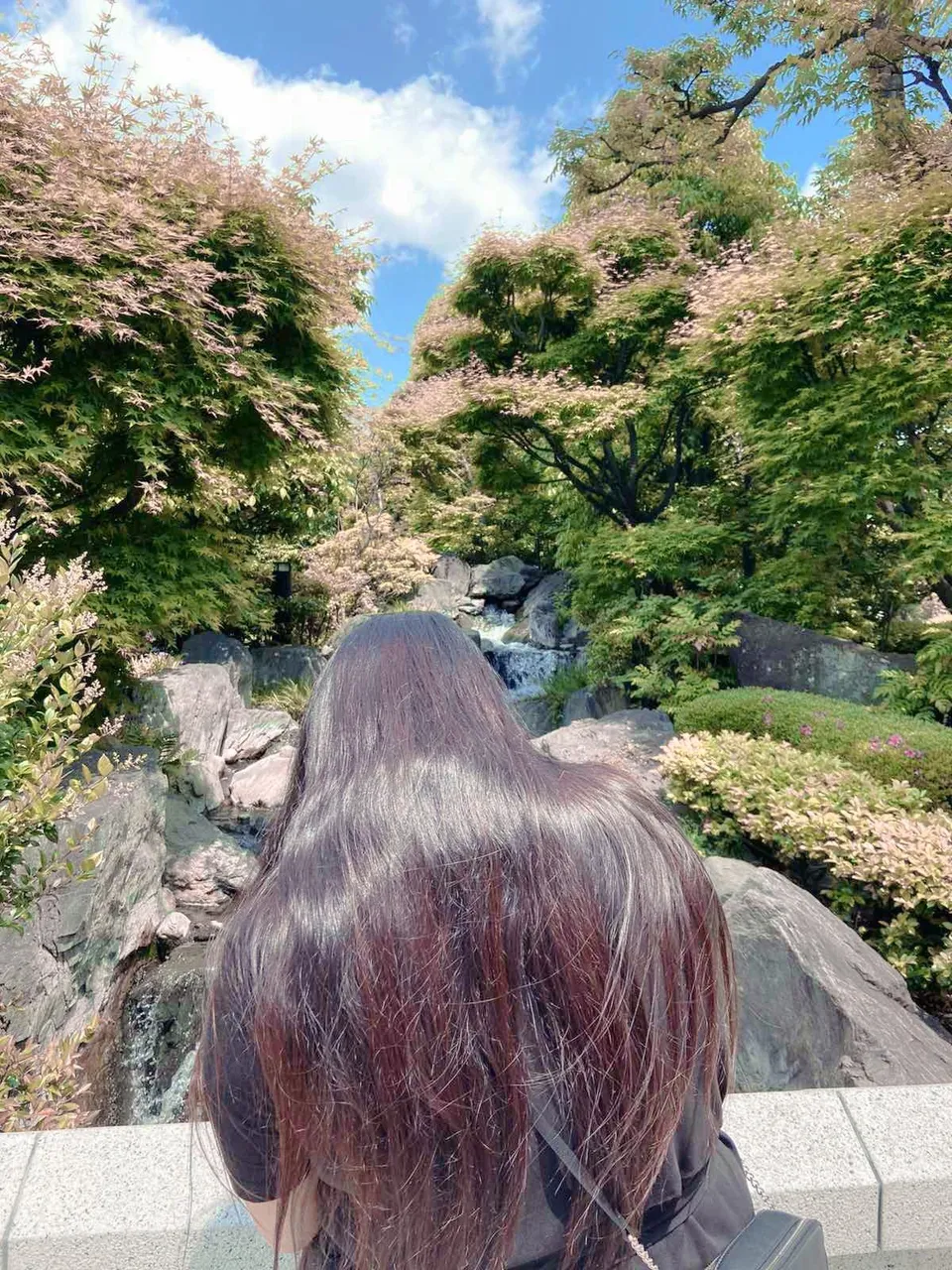
And while we were strolling, the skytree was clearly visible.
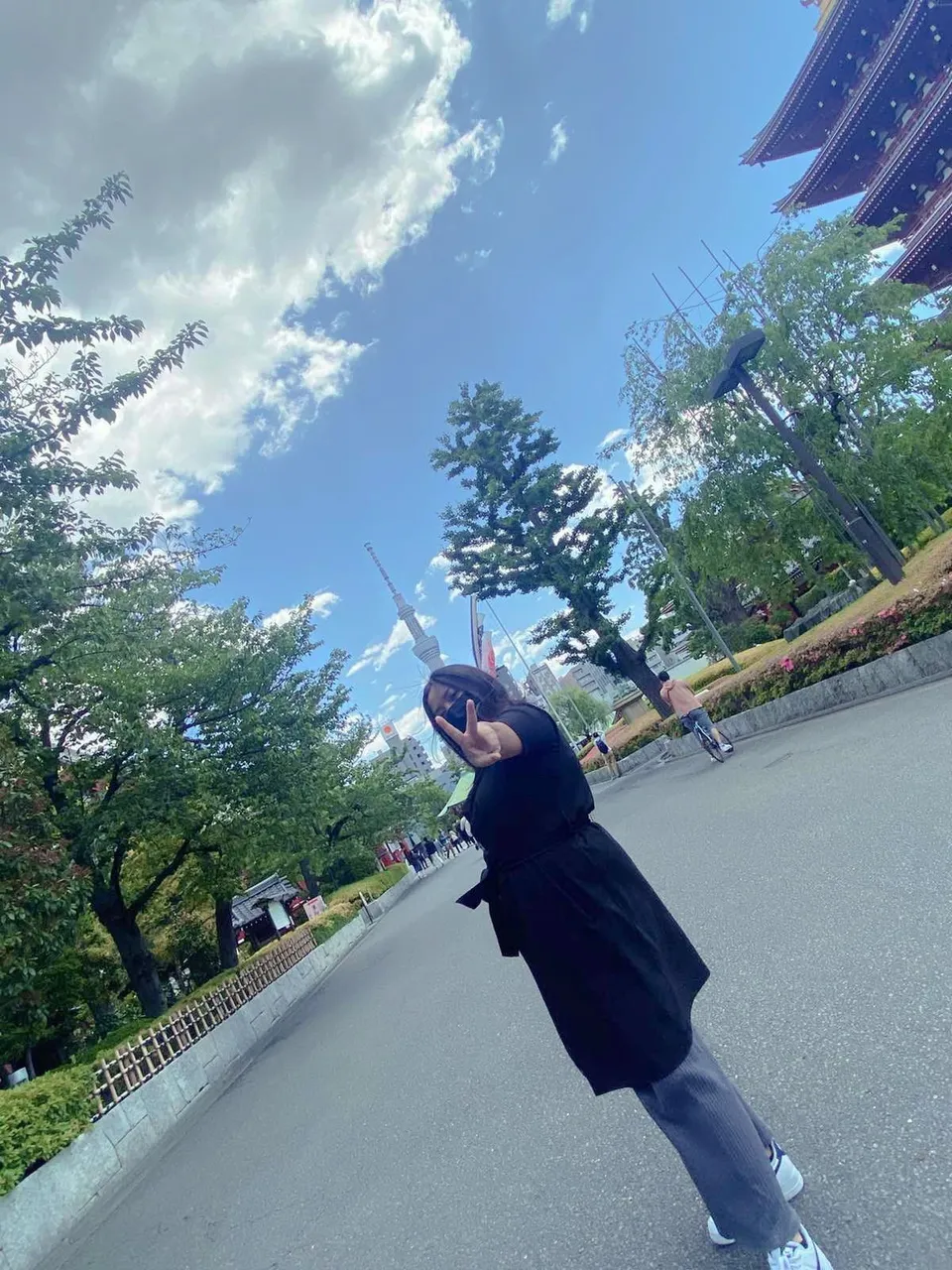
To reach Sensoji, you can take the subway leading to Asakusa. I hope you won't get it confused with Akasaka. 😅 When I was still new to Tokyo, I always get these 2 names confused.
If you're in Tokyo and want to be immersed by culture, you should head to Asakusa and visit this popular temple. It could get crowded especially that Japan is letting in tourists again. So make sure to plan your visit and probably rent and wear a yukata while strolling around the temple.
Thanks for reading!
See you around! じゃあ、またね!
All photos are taken using my phone unless stated otherwise.
sources: Wikipedia - Sensoji, Japan Guide - Sensoji